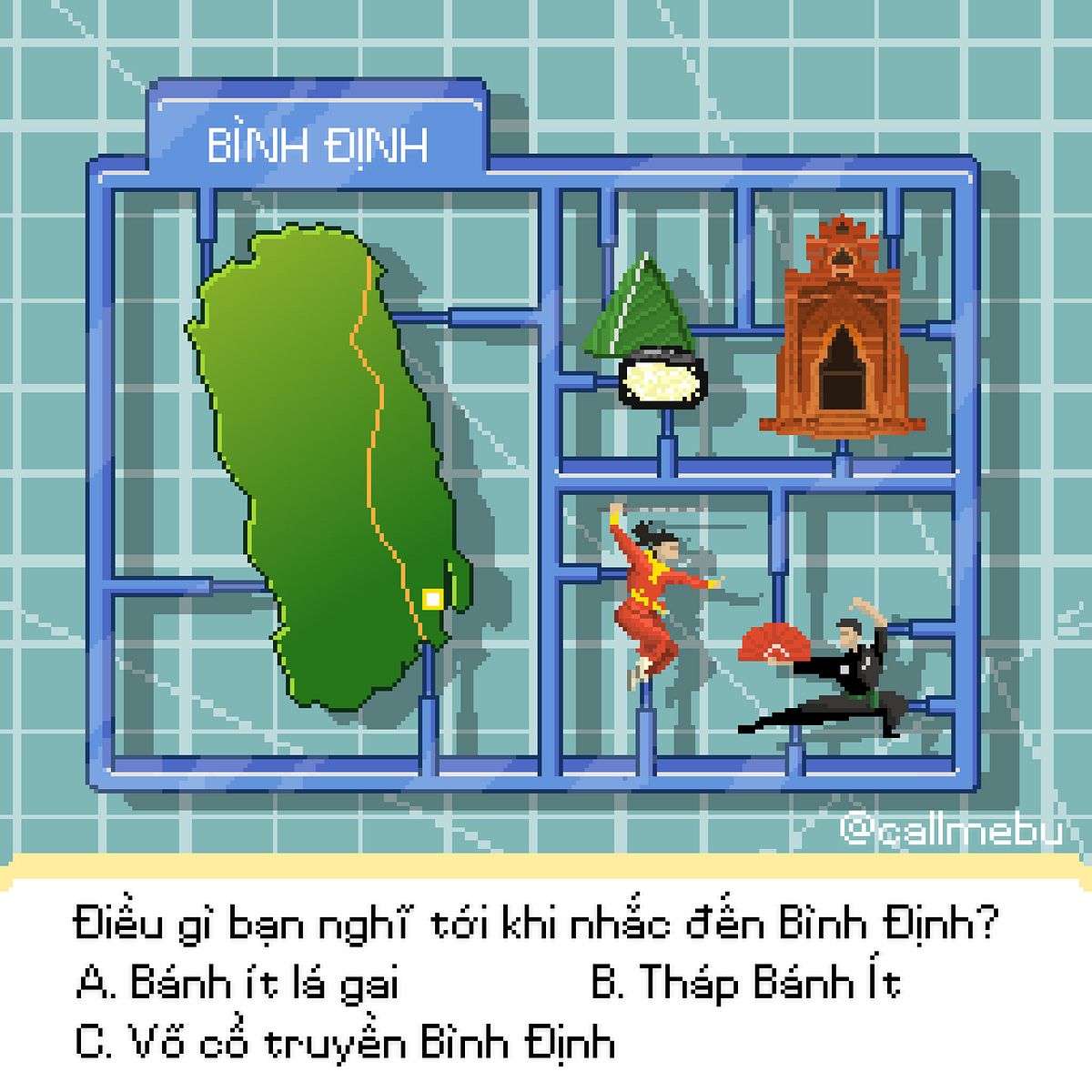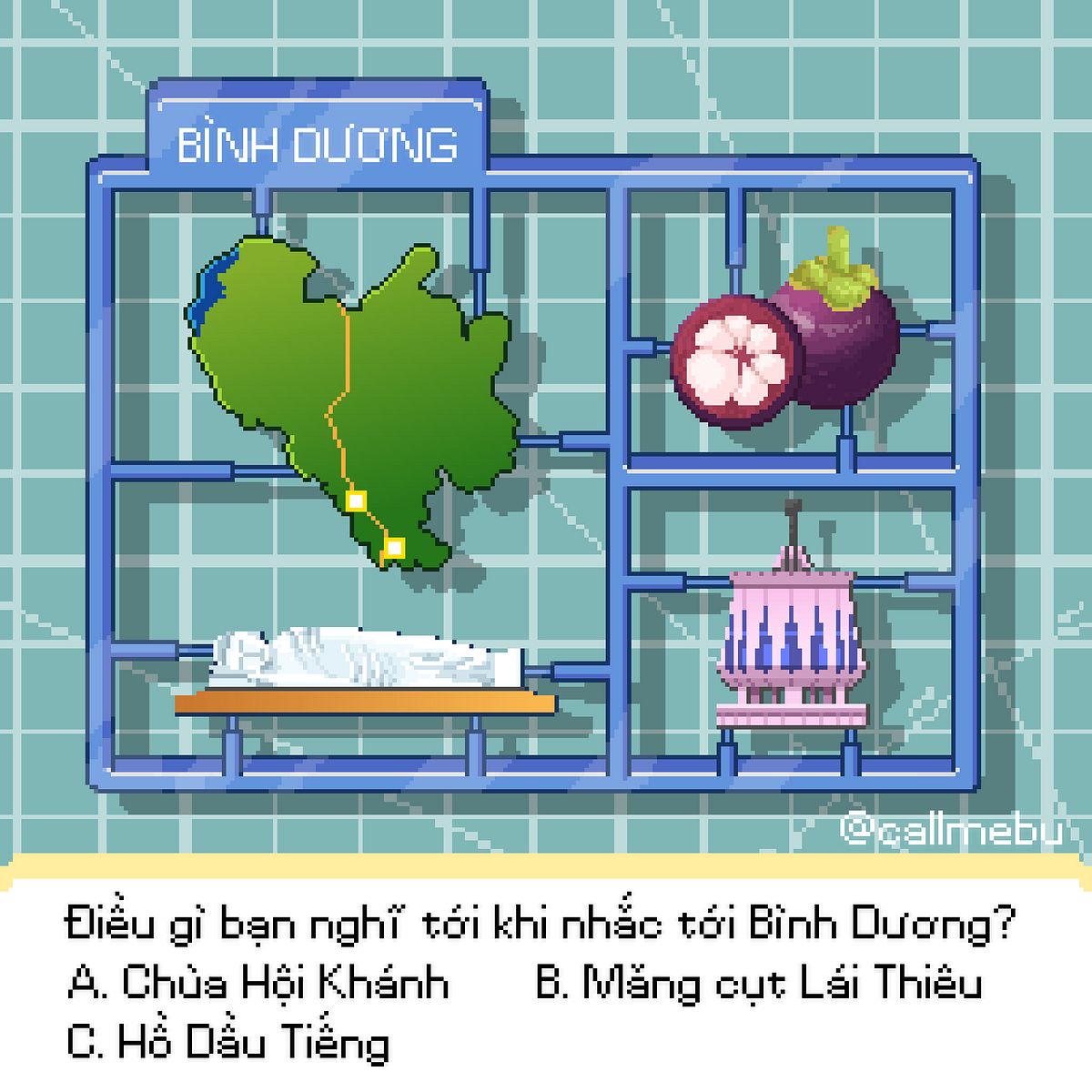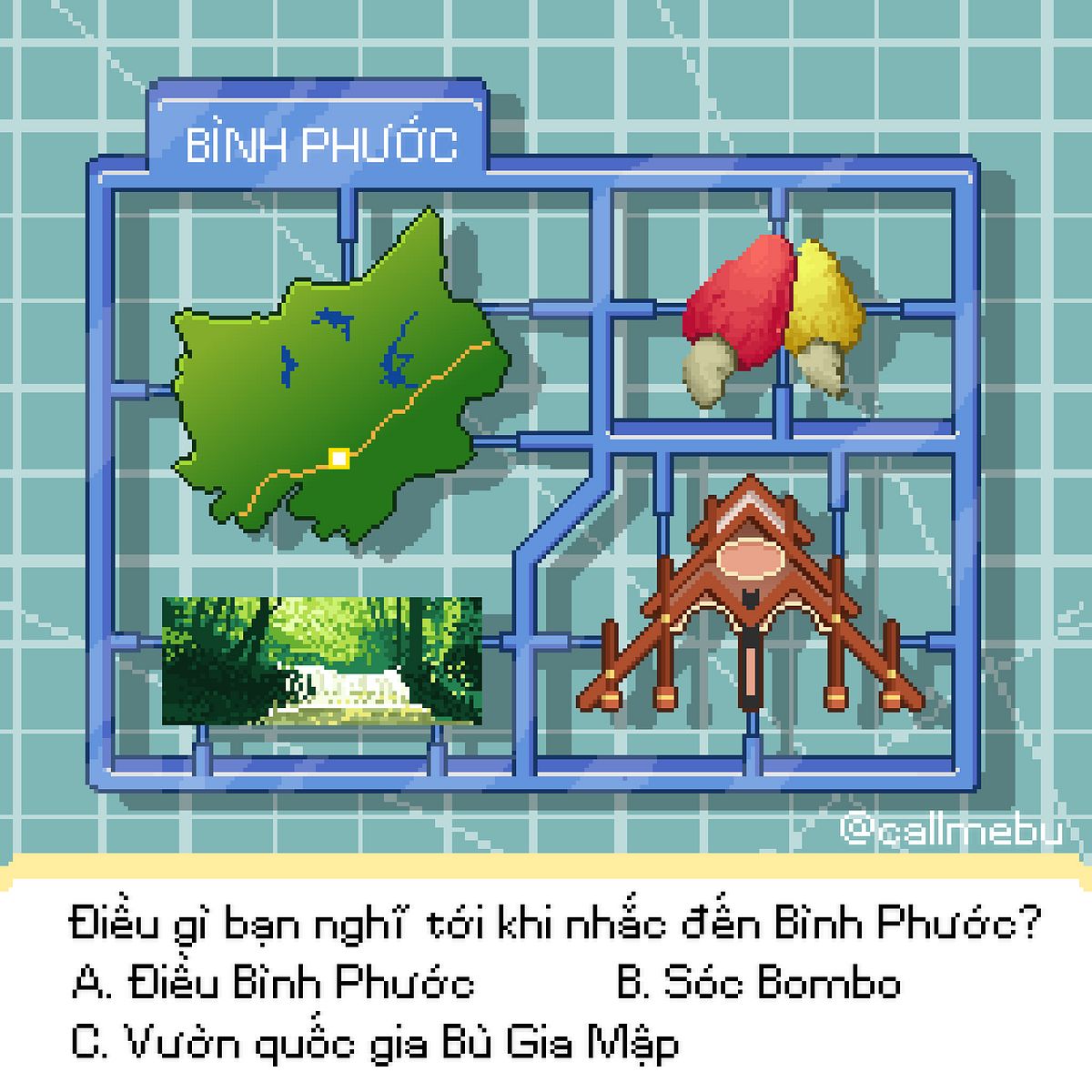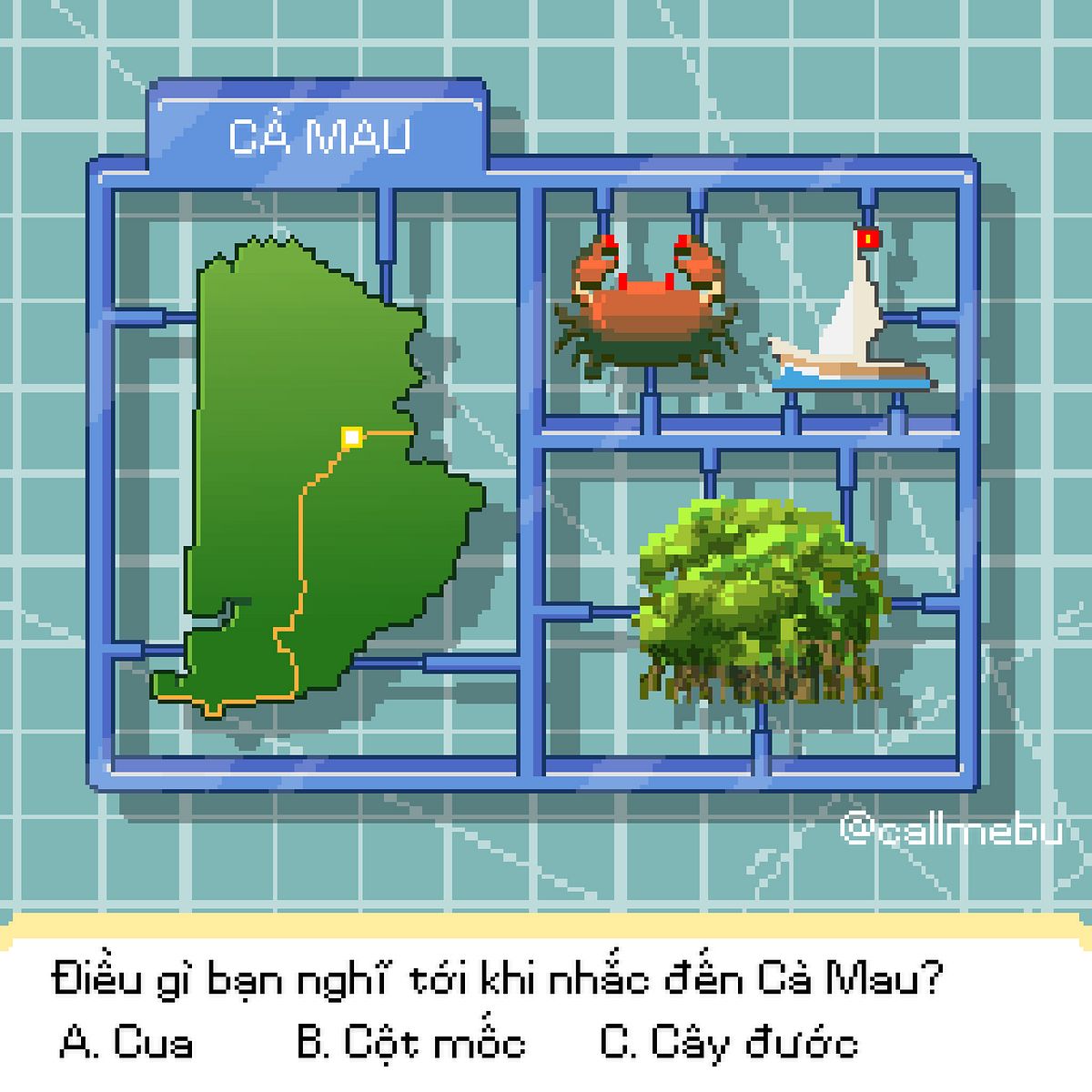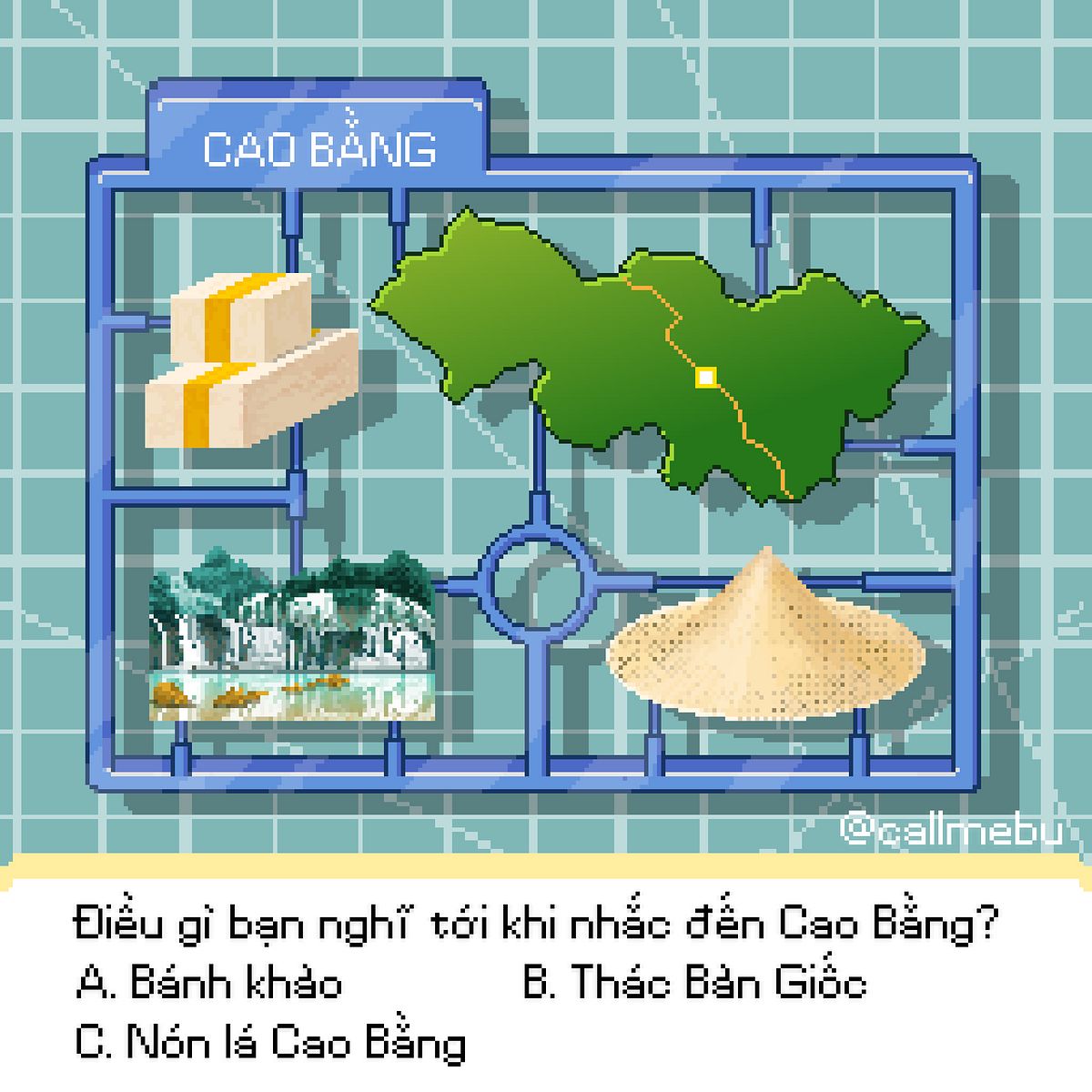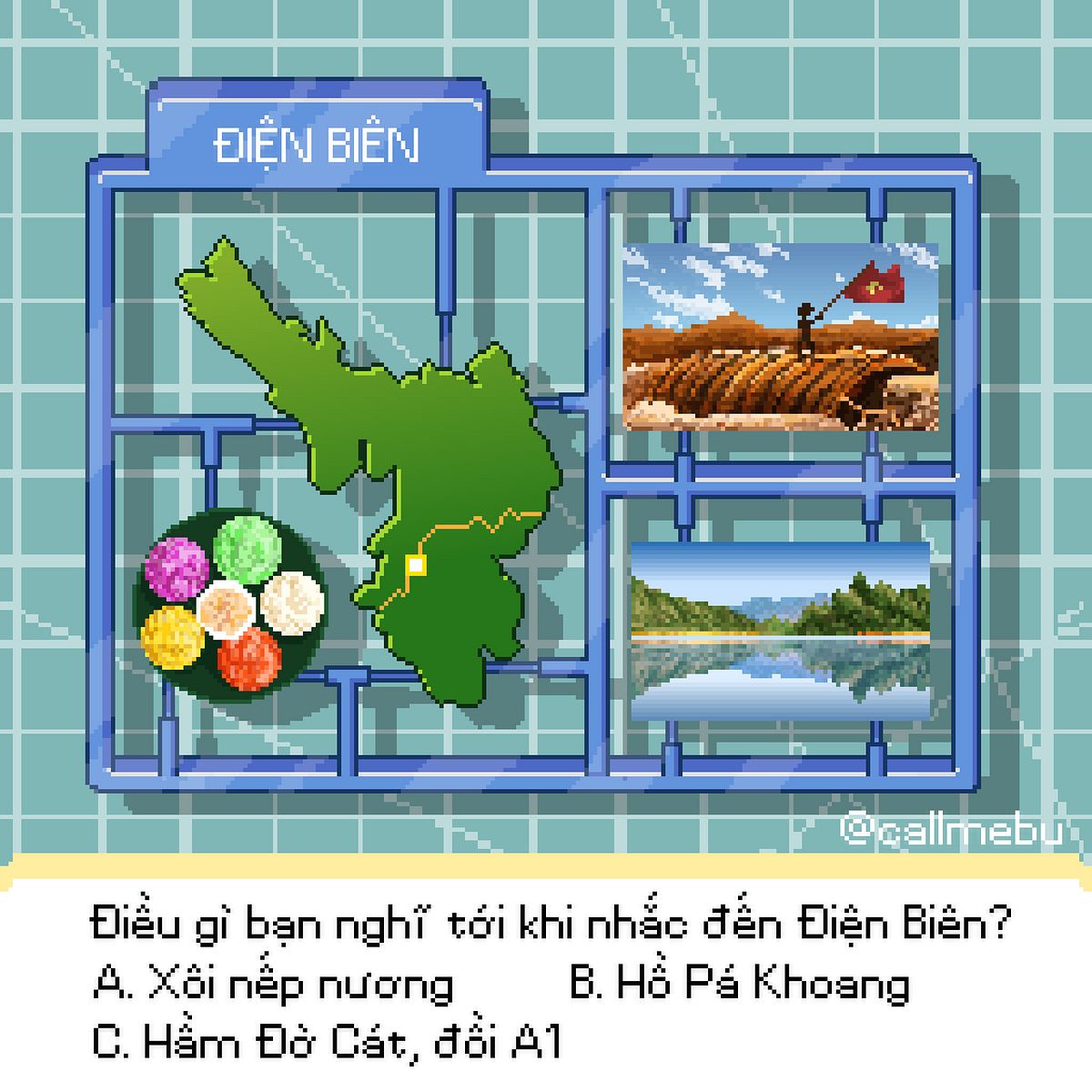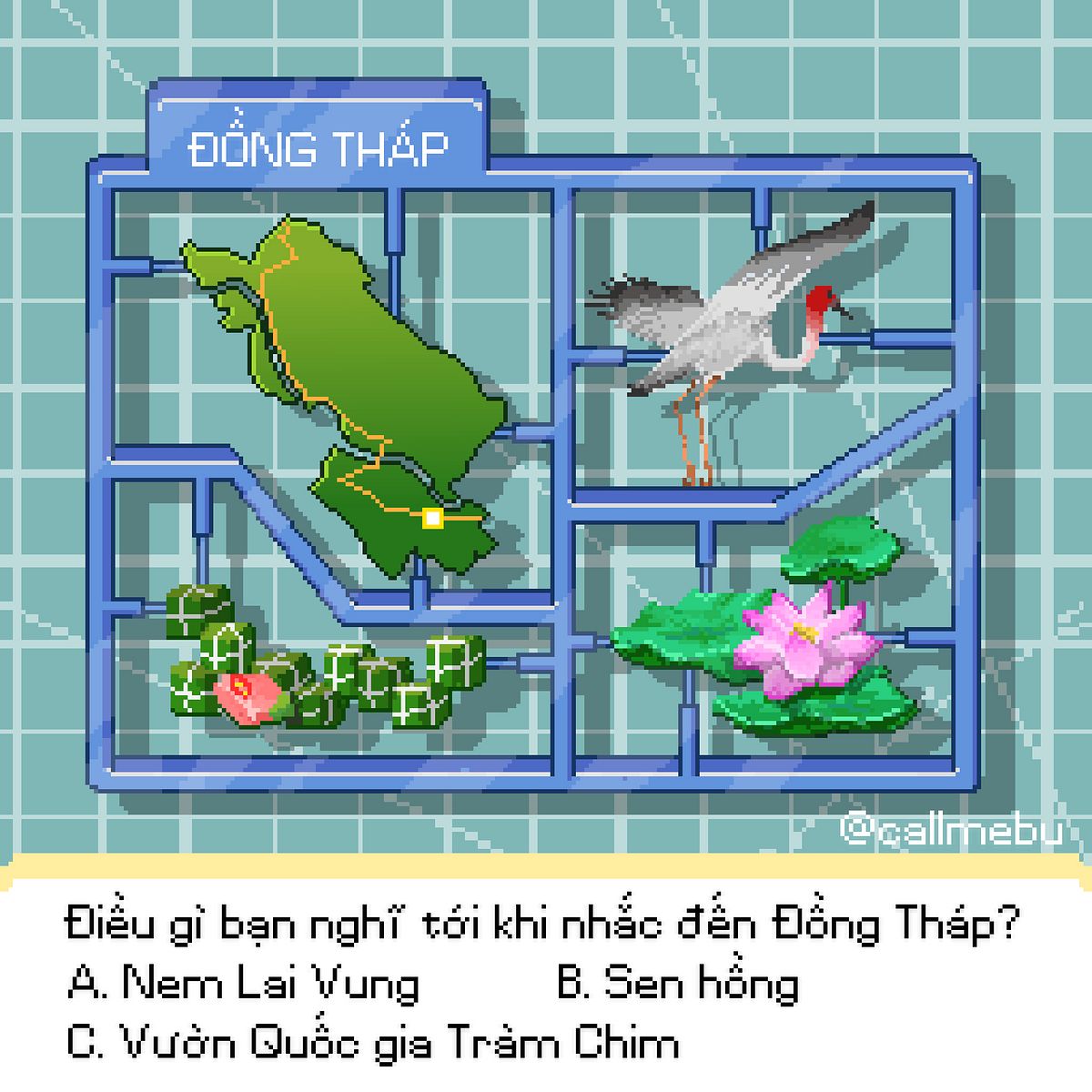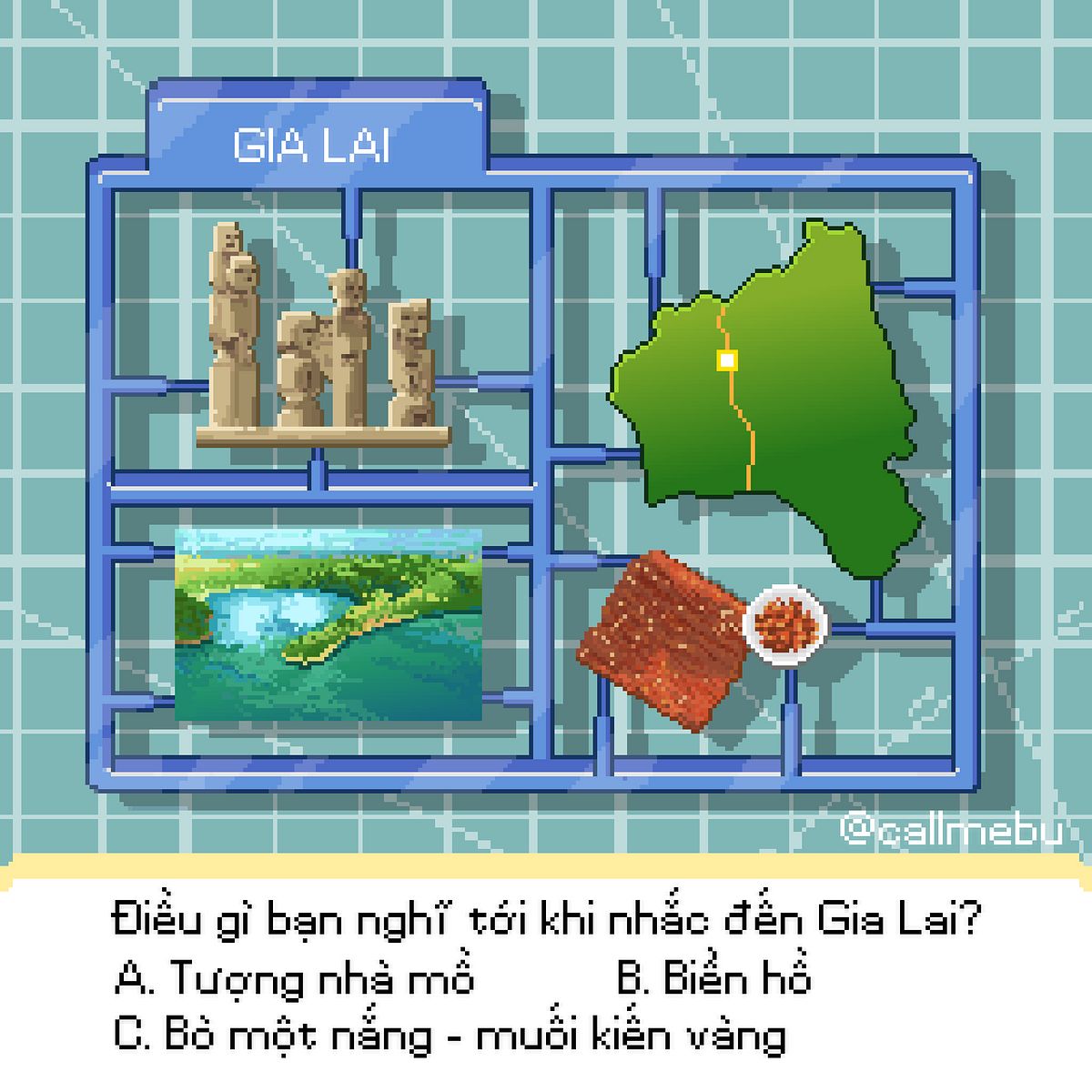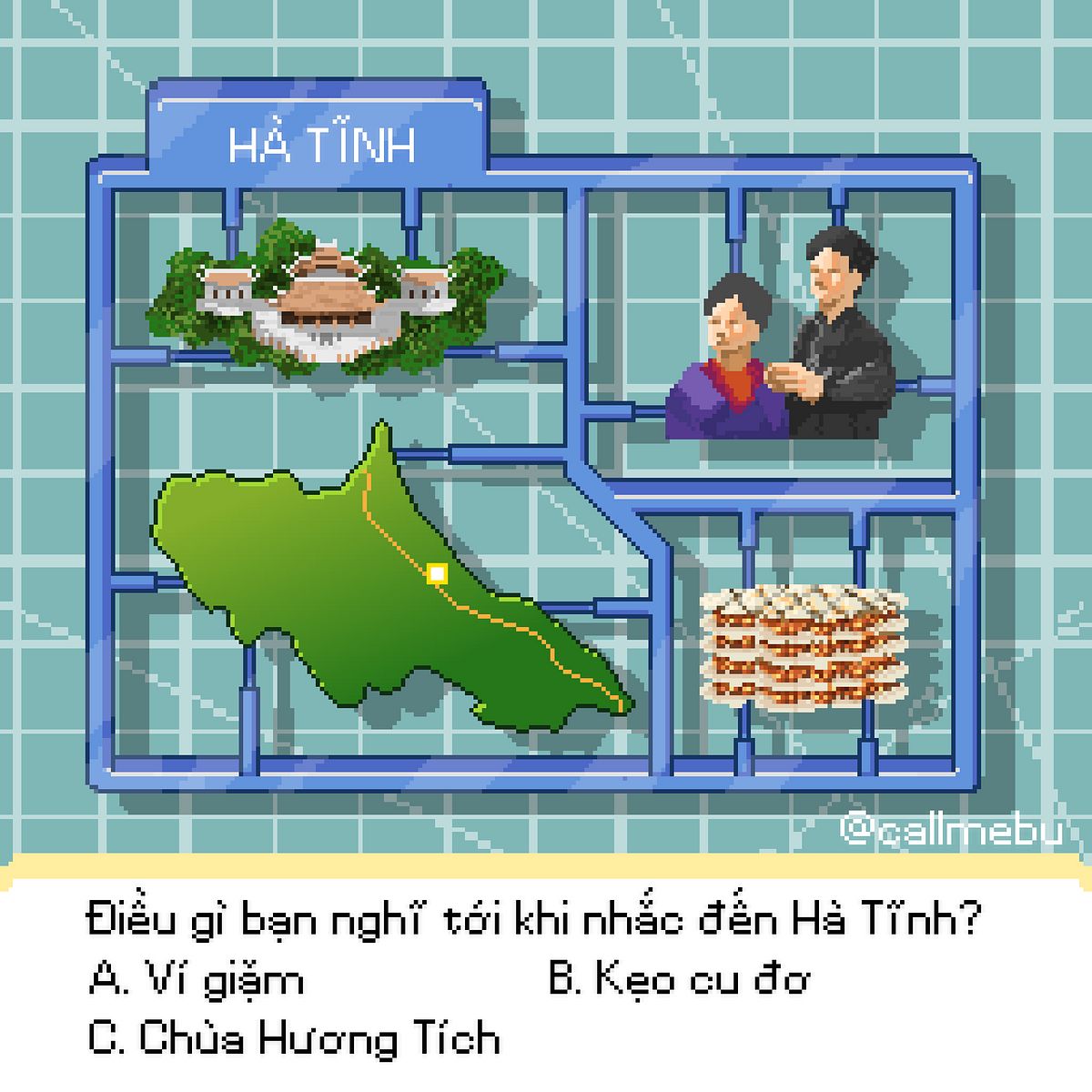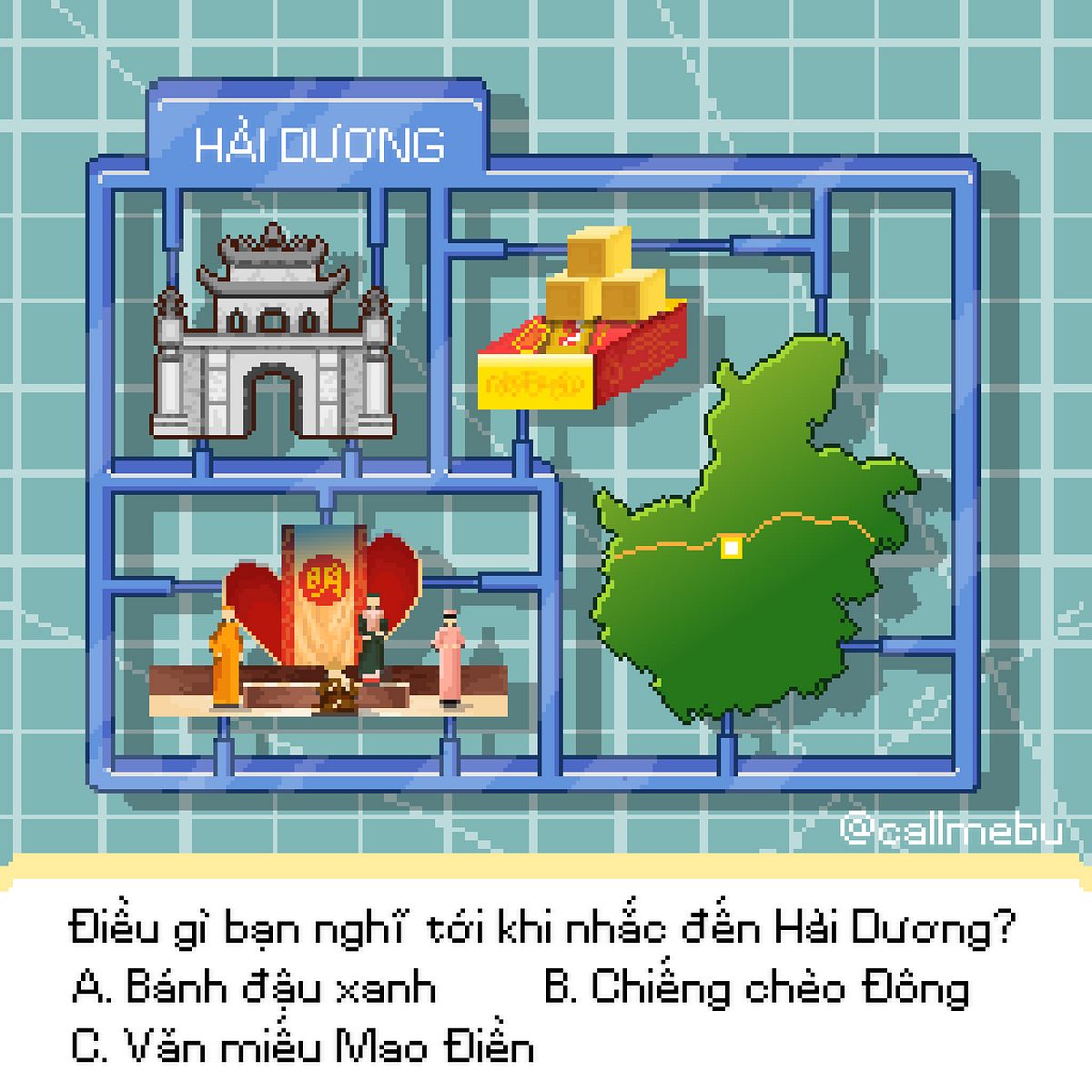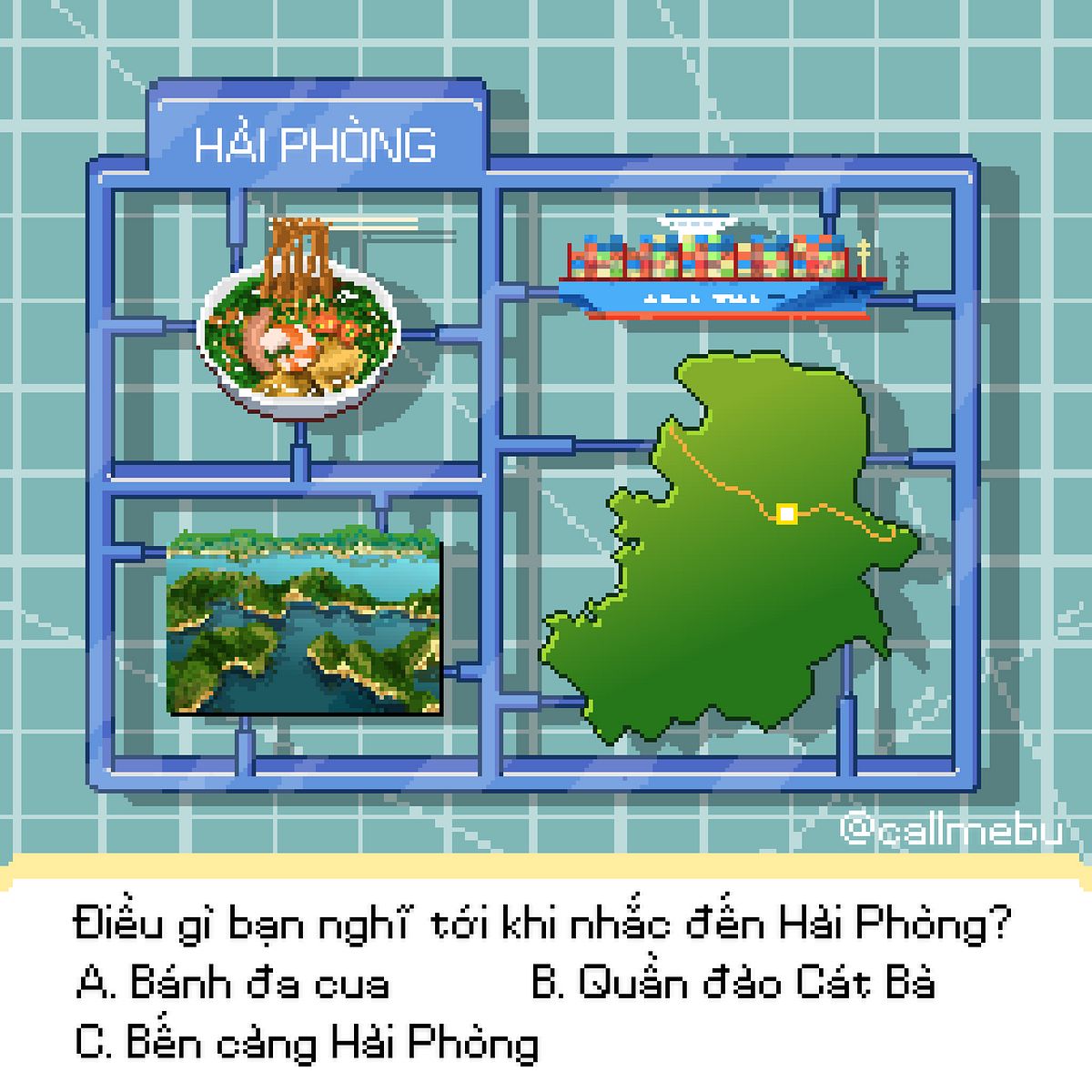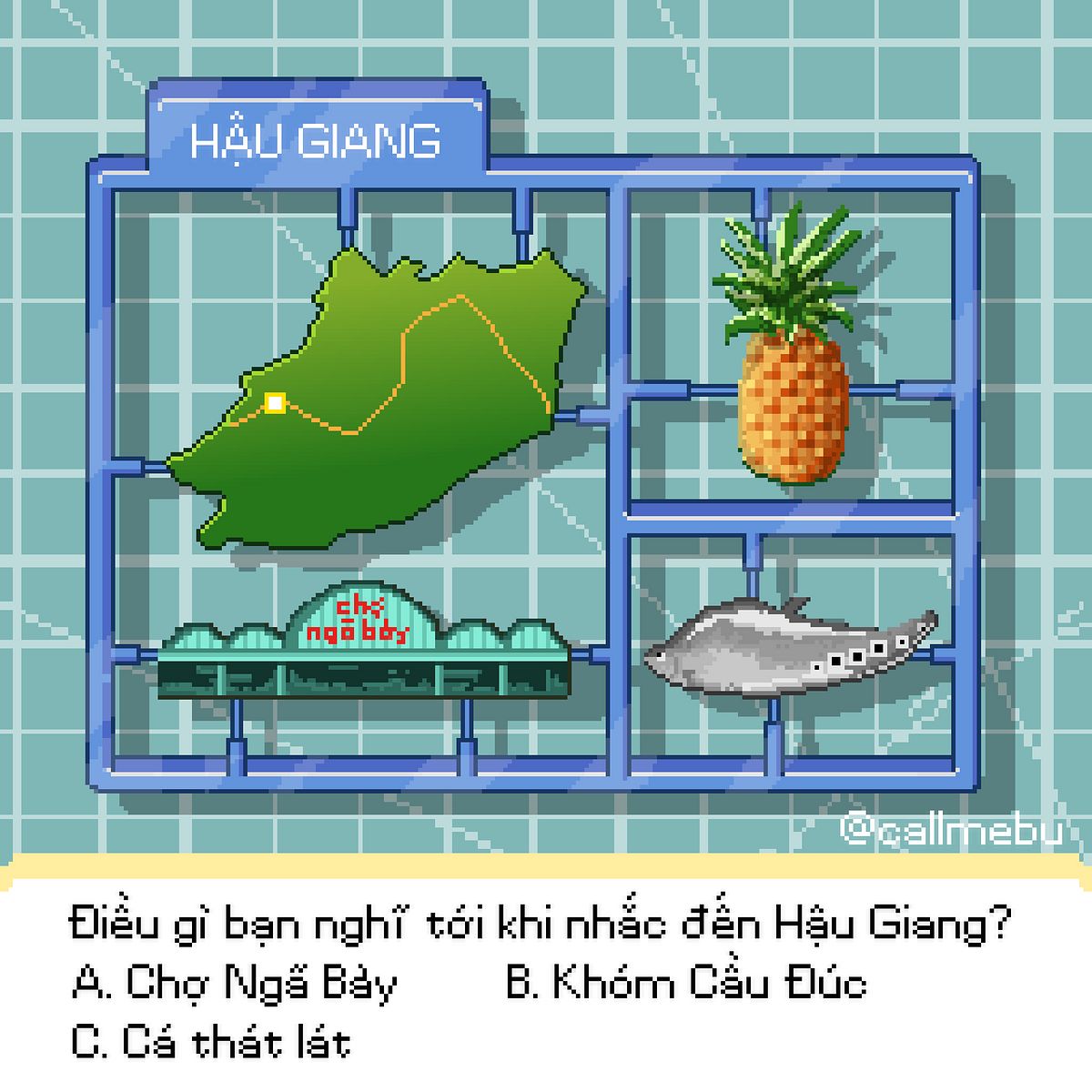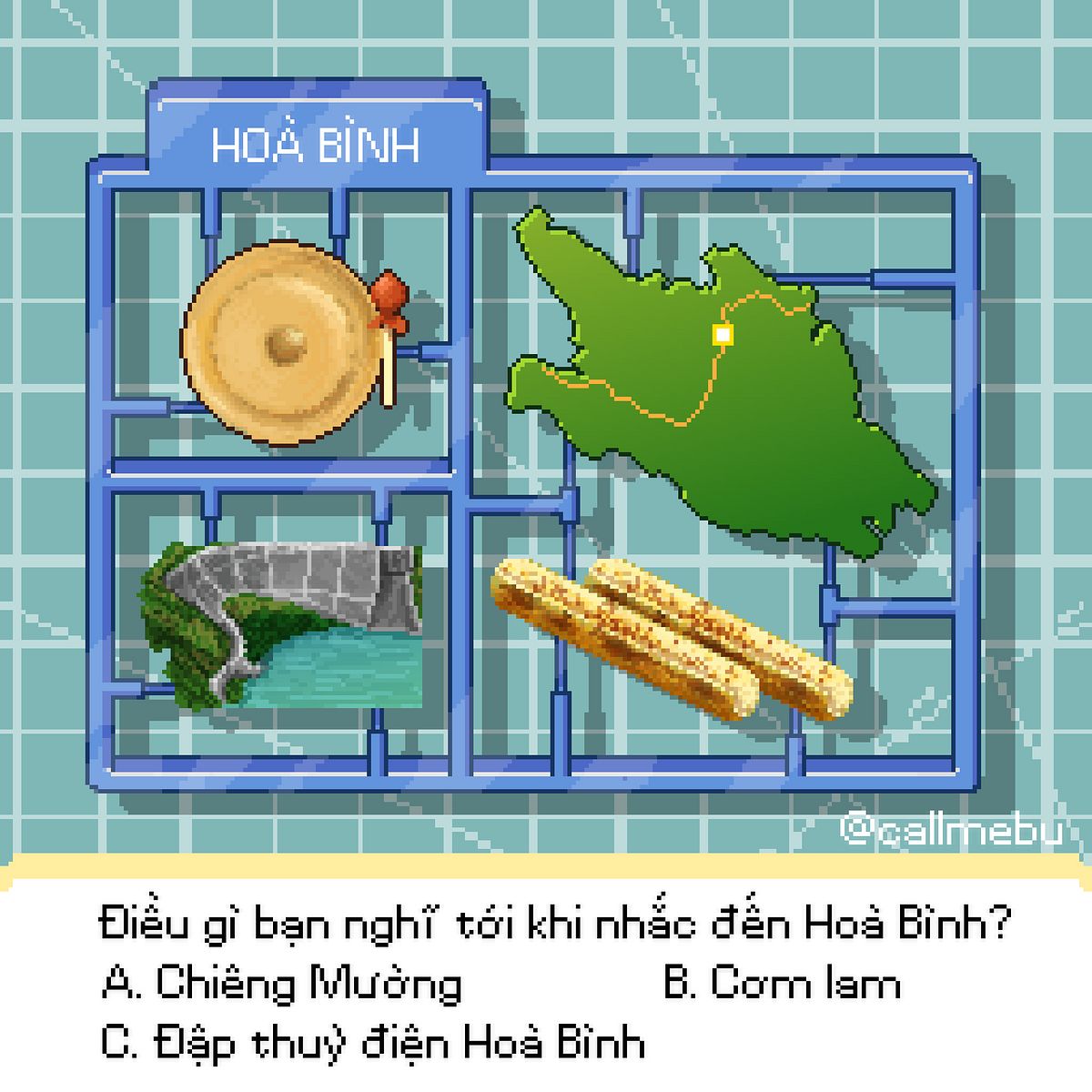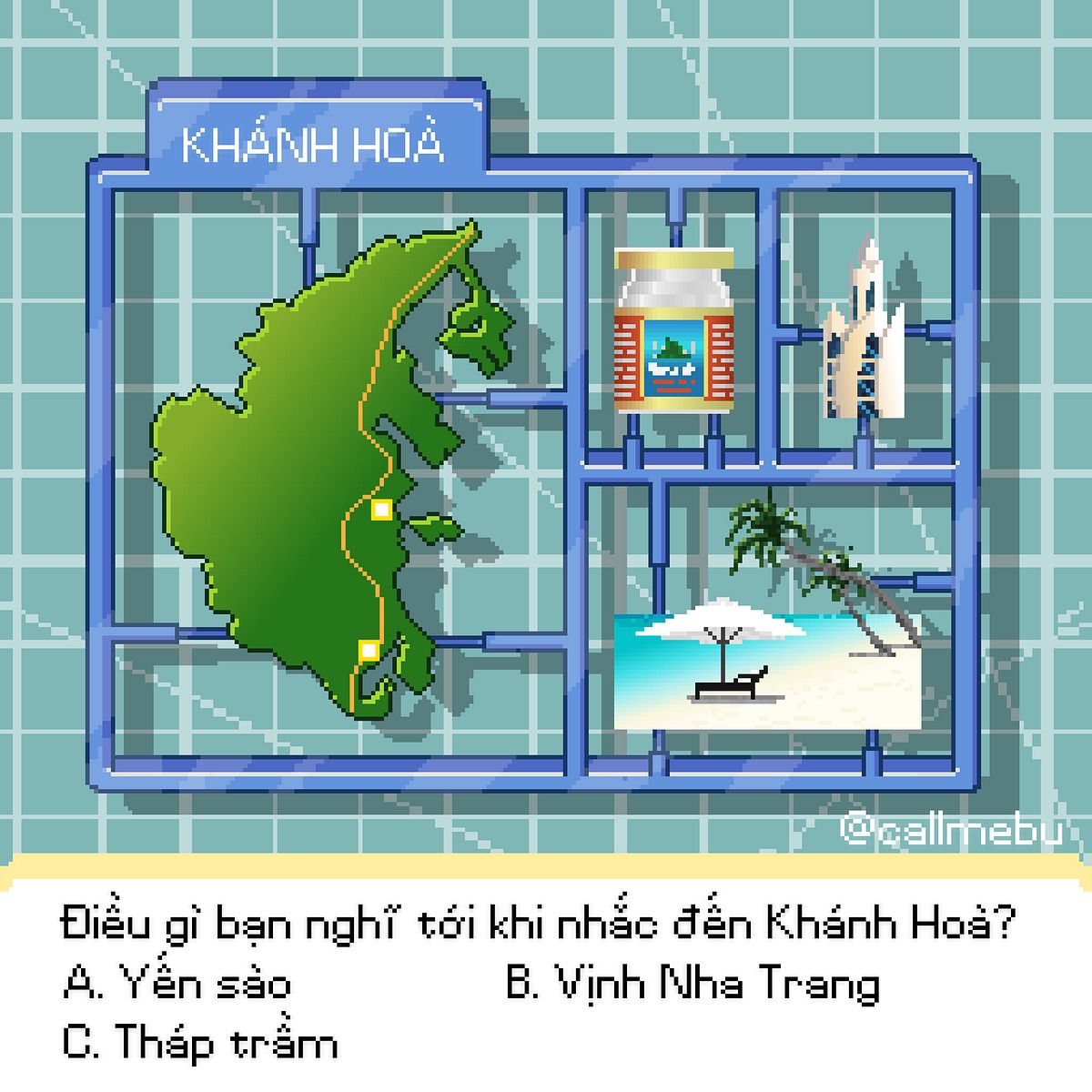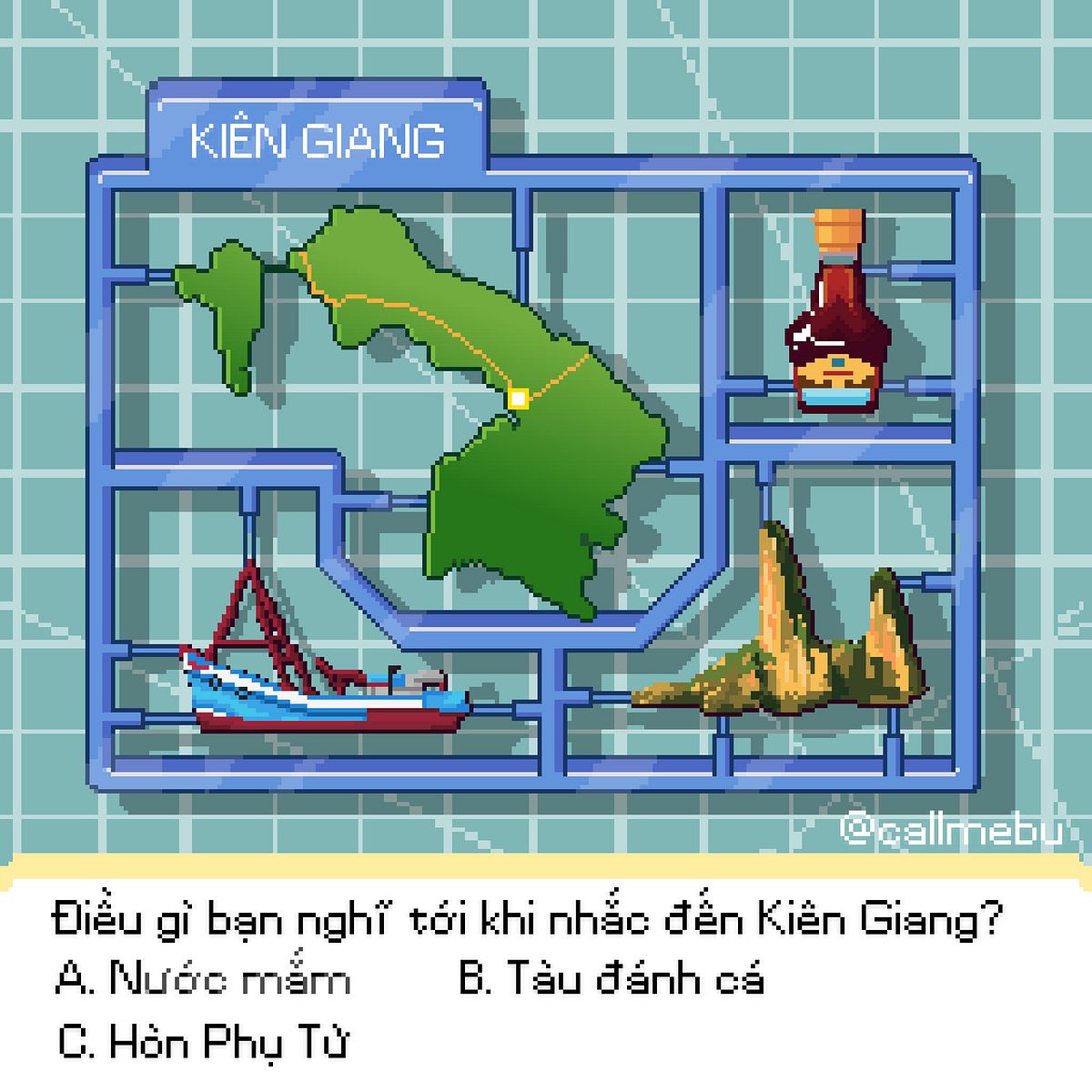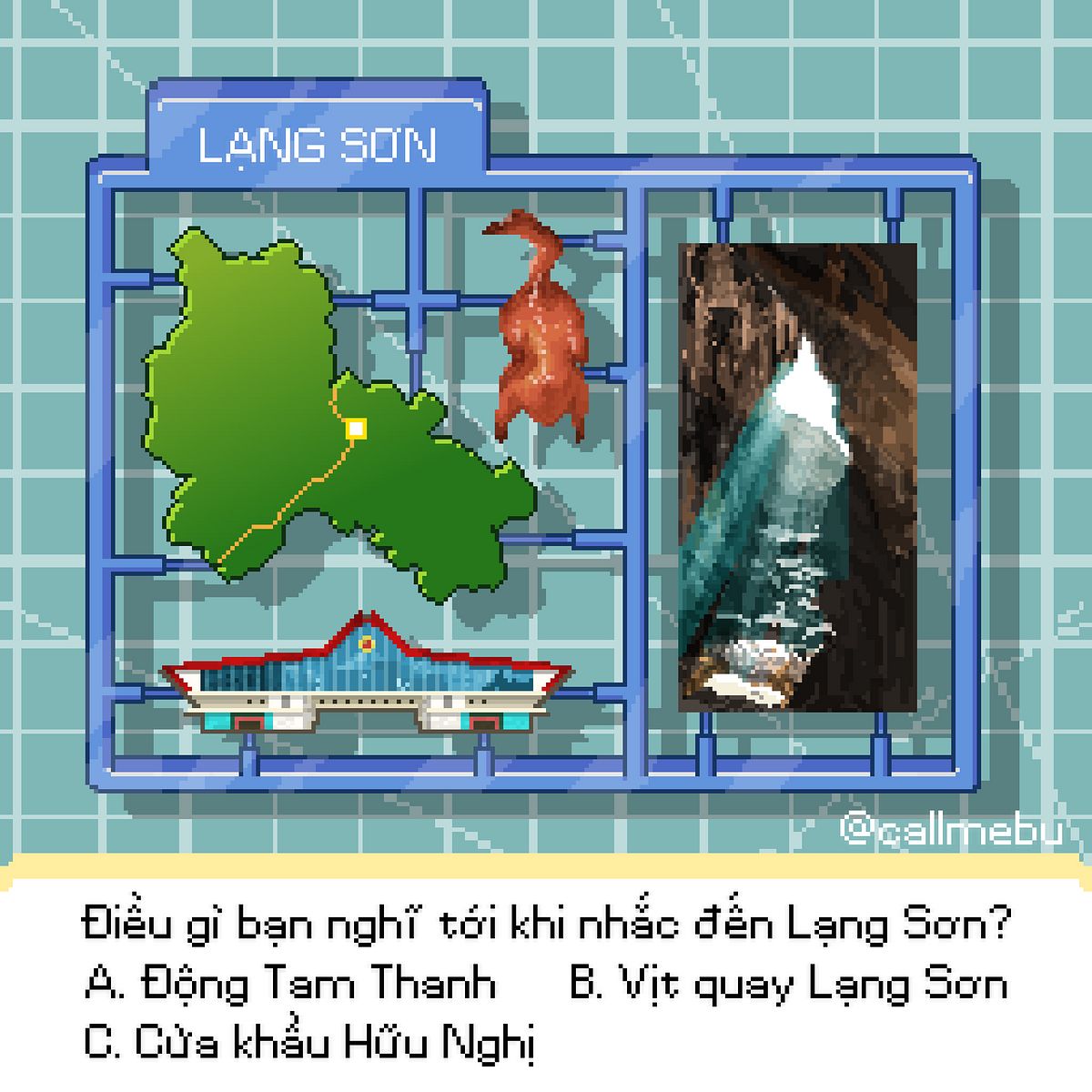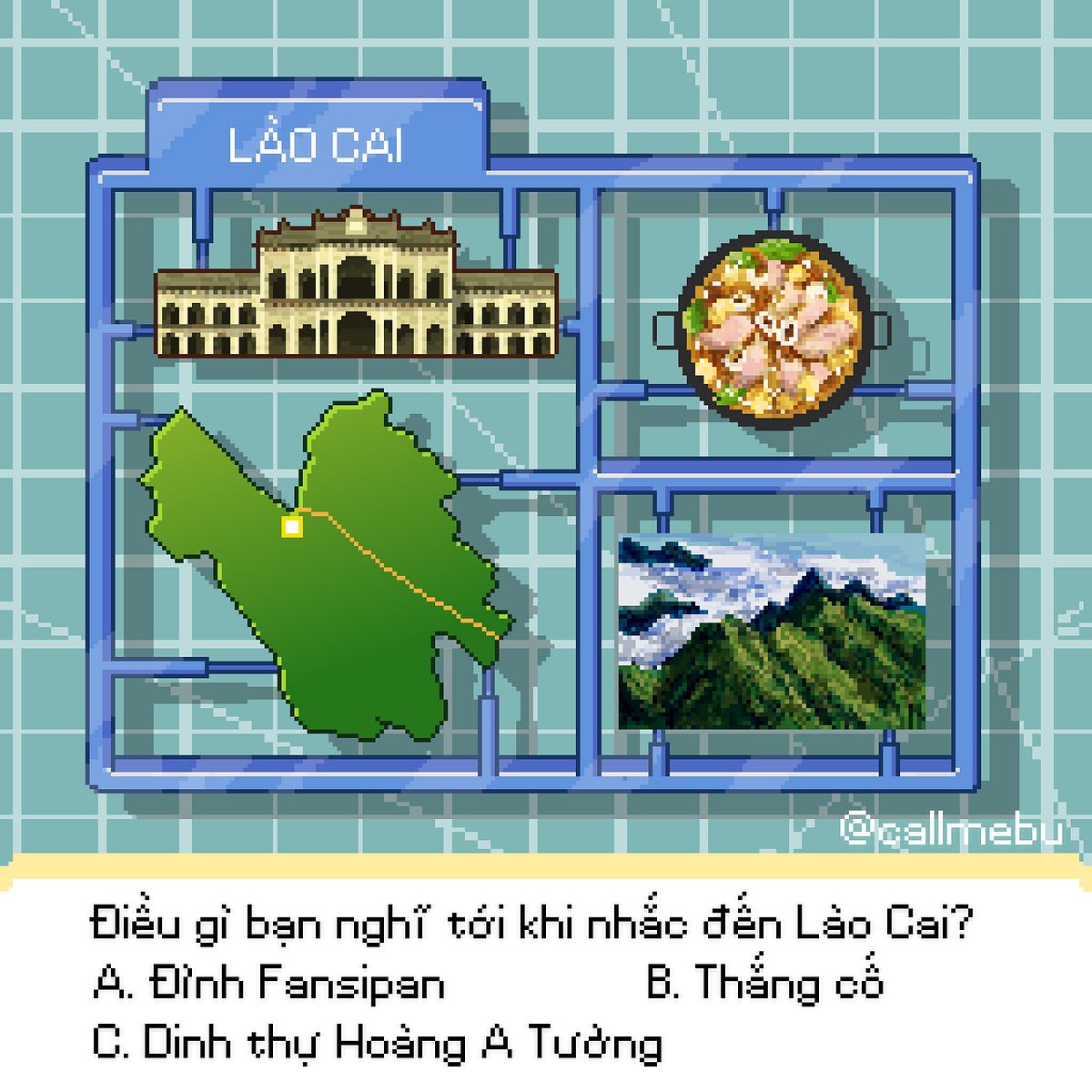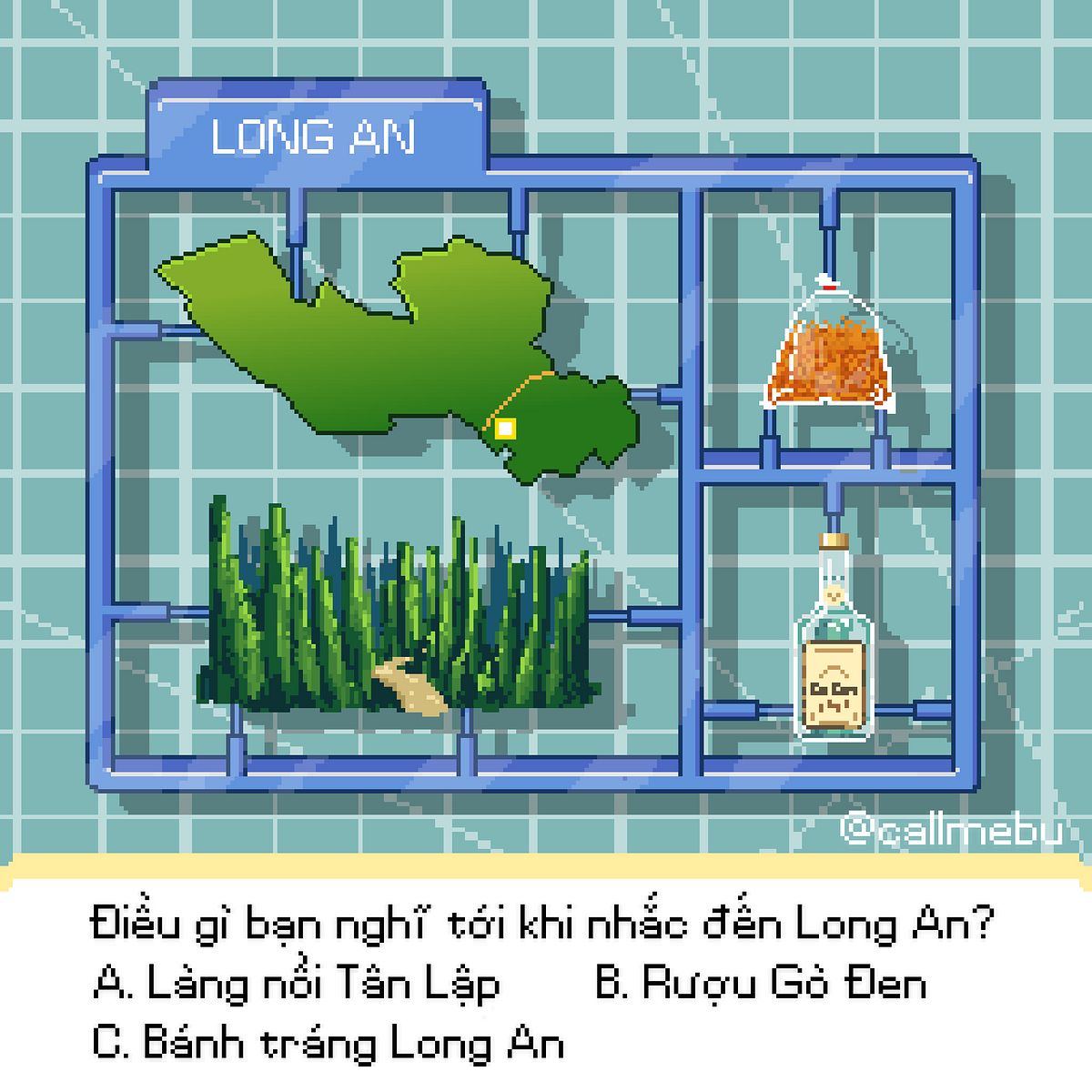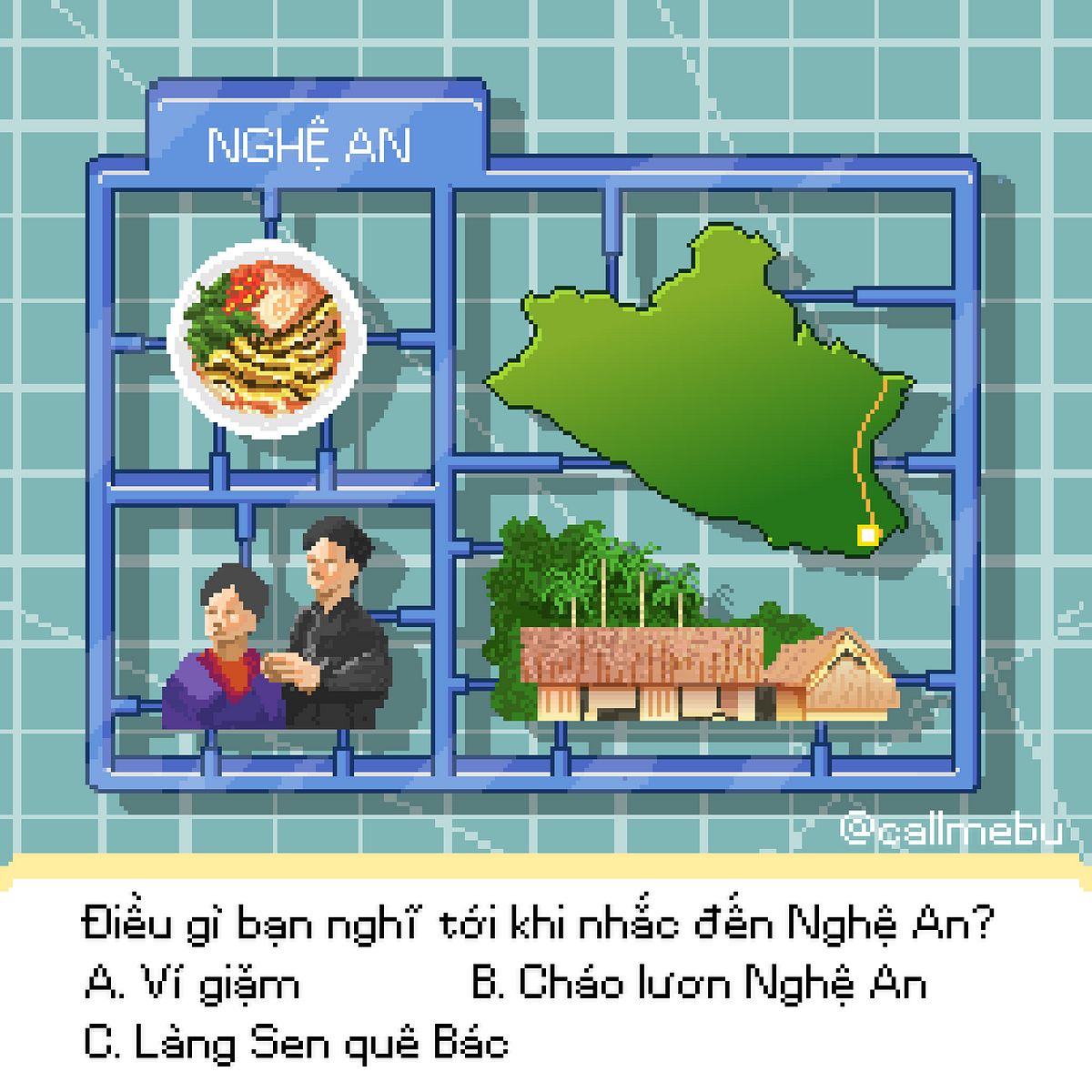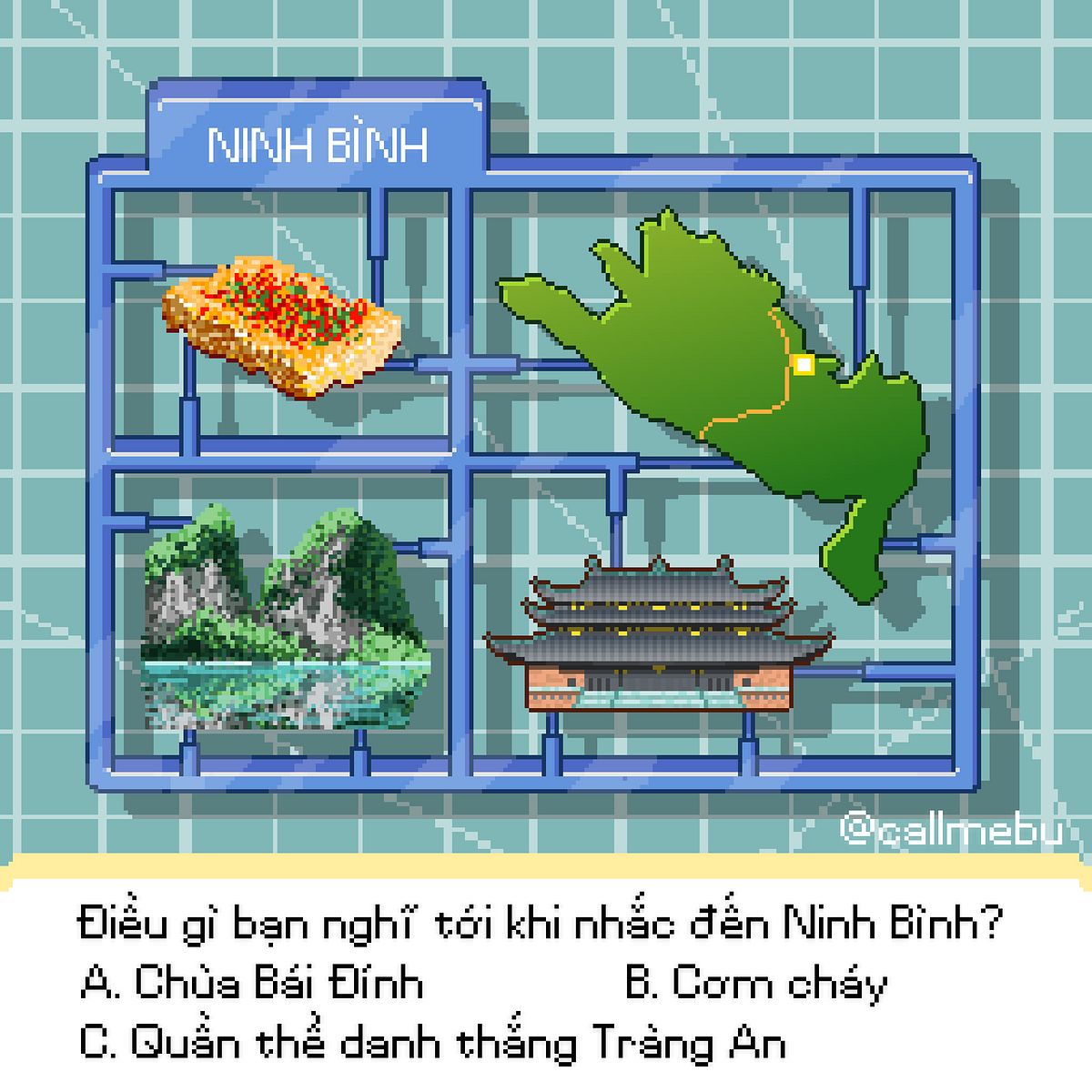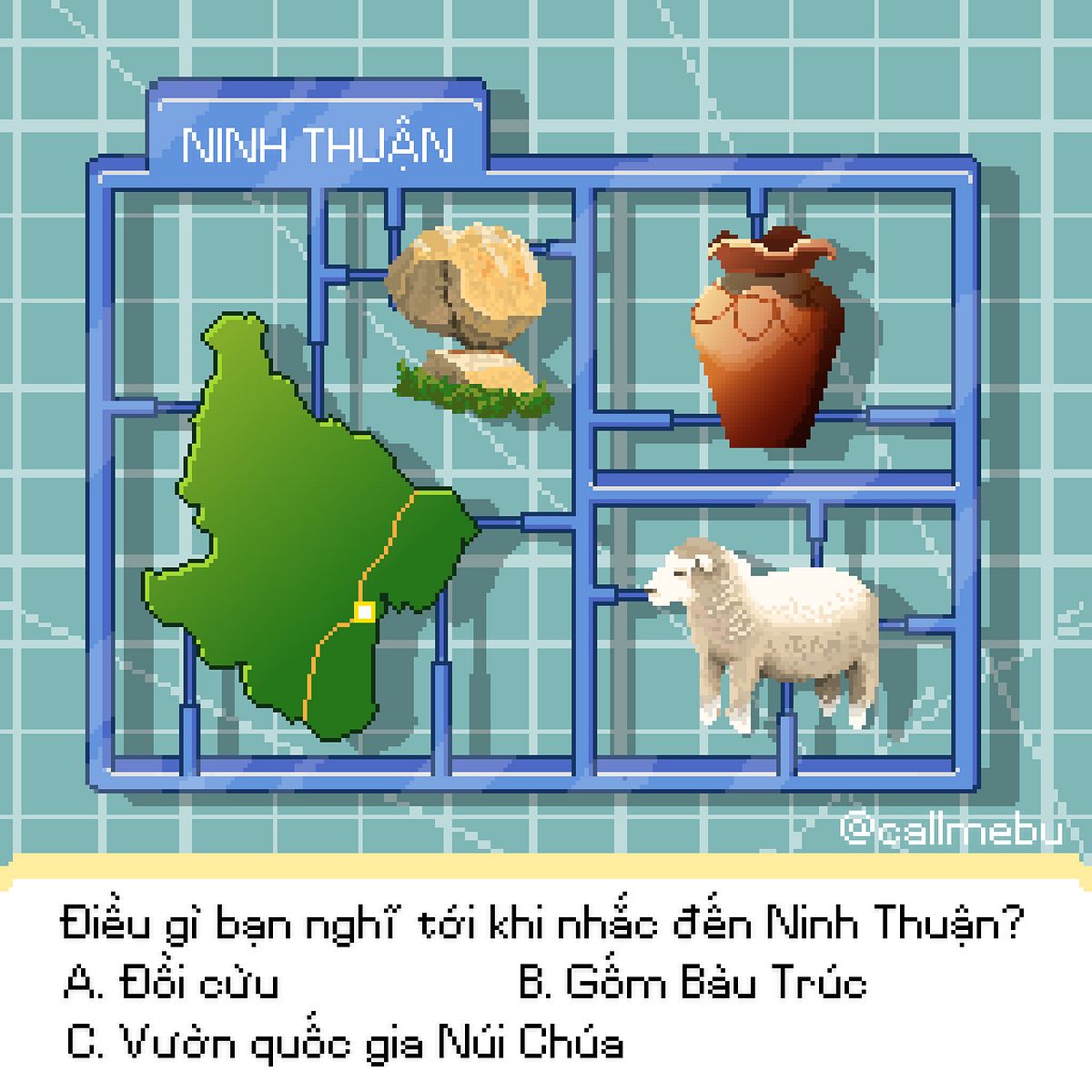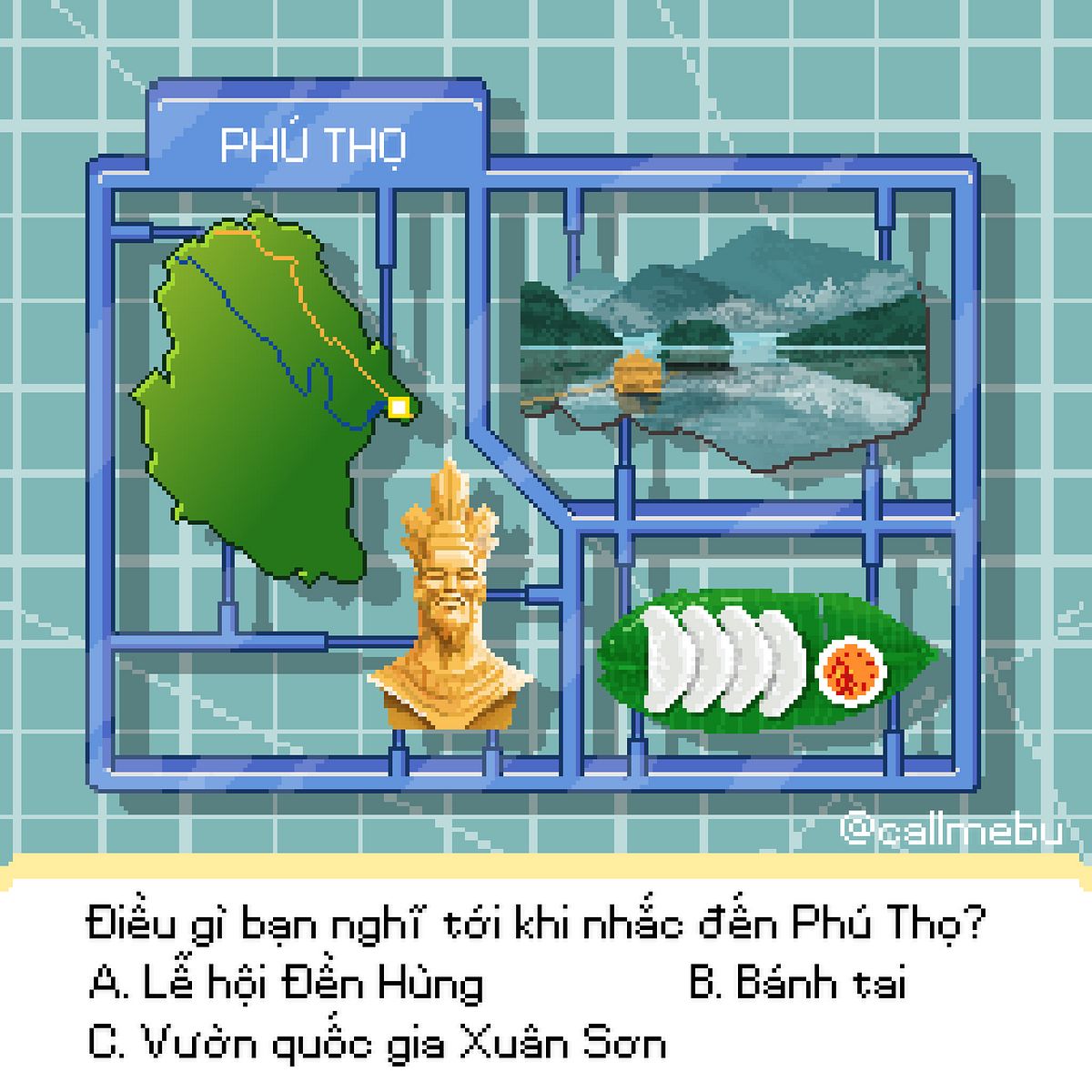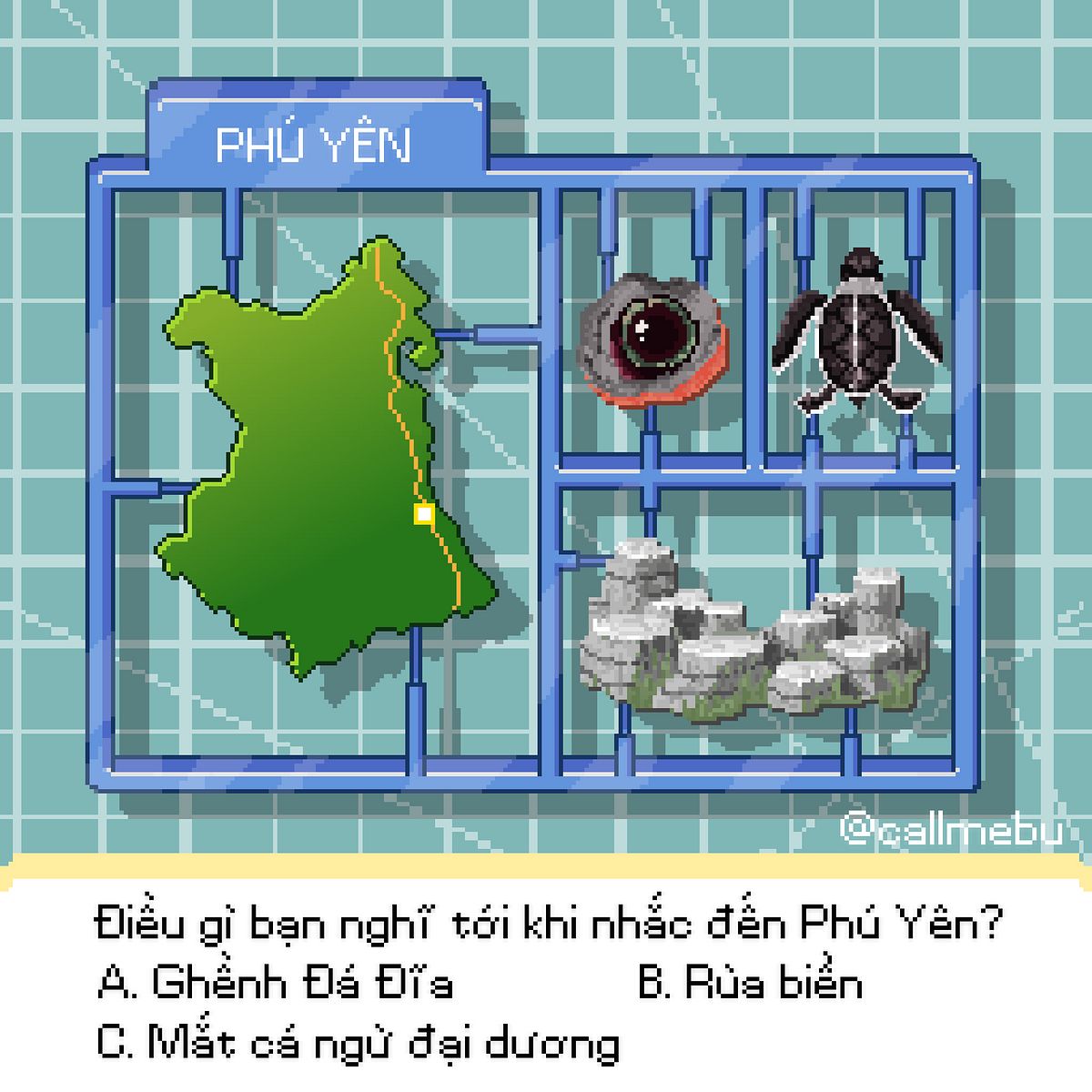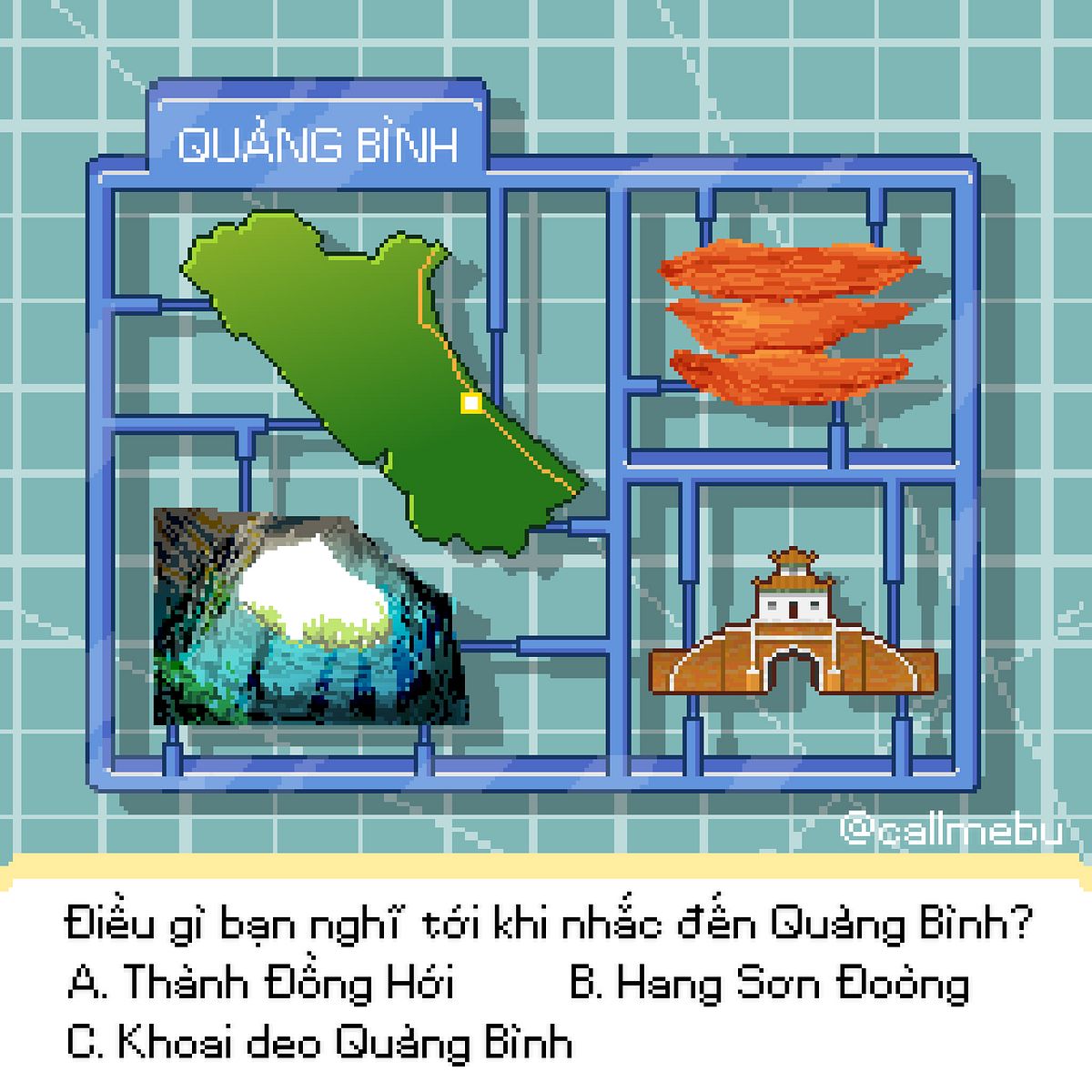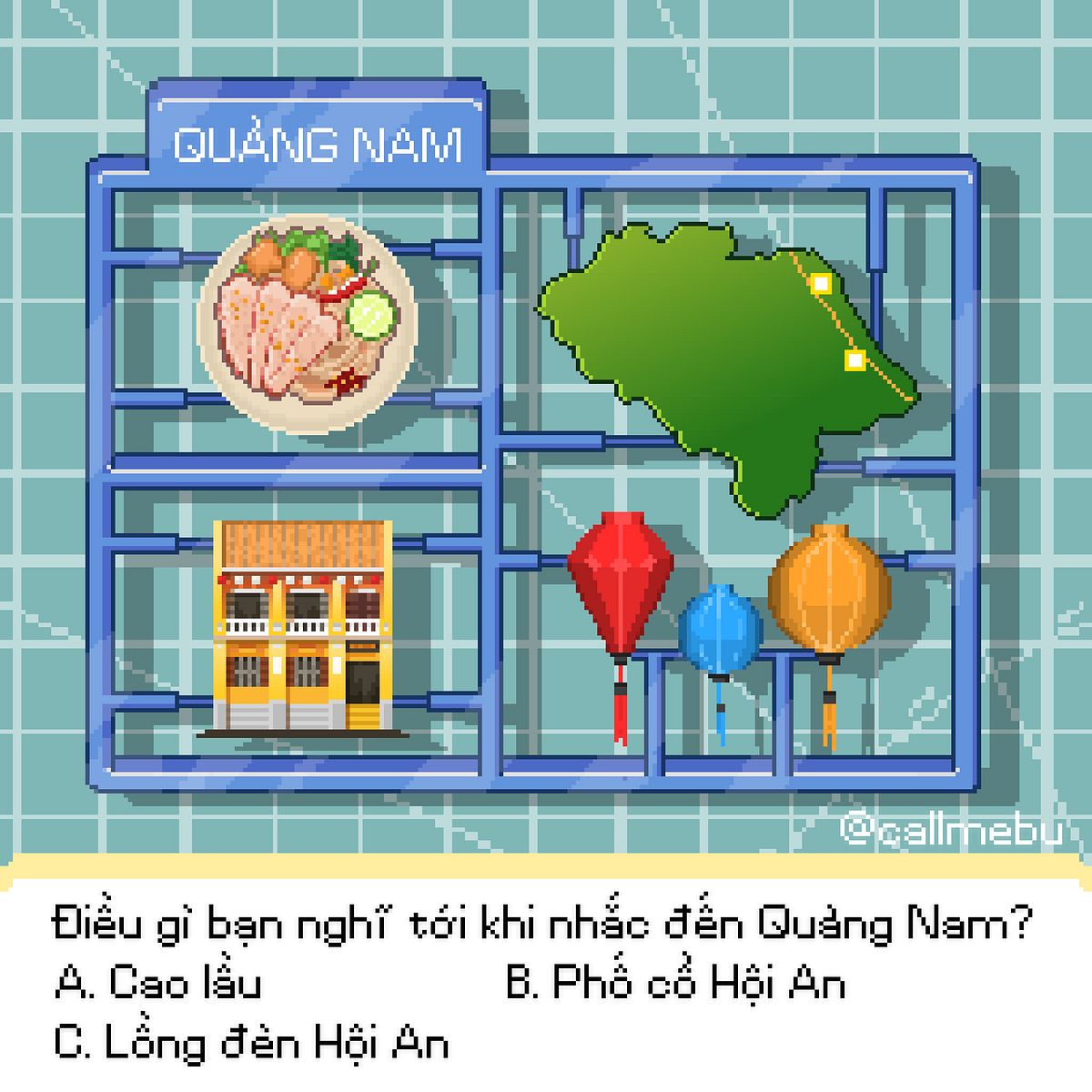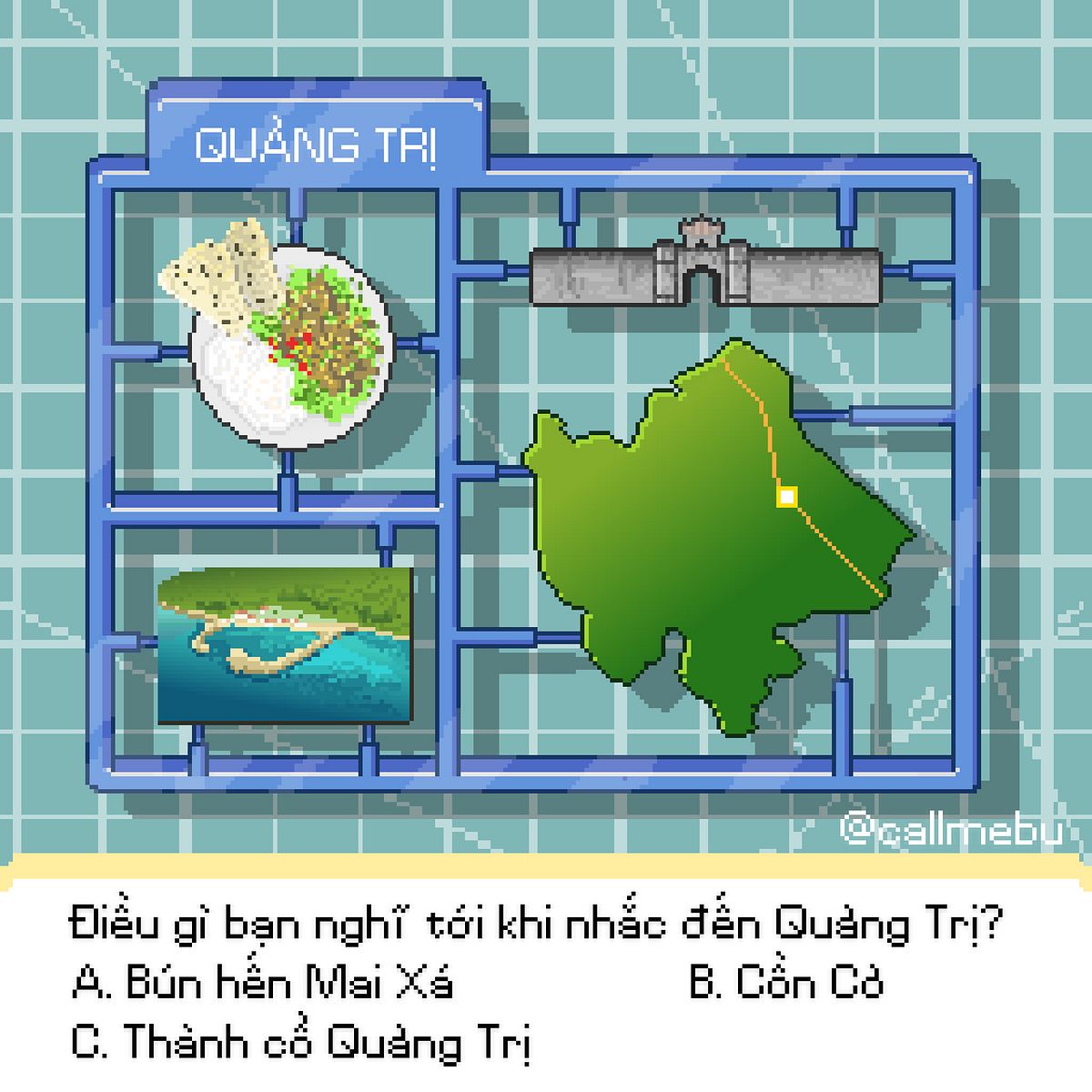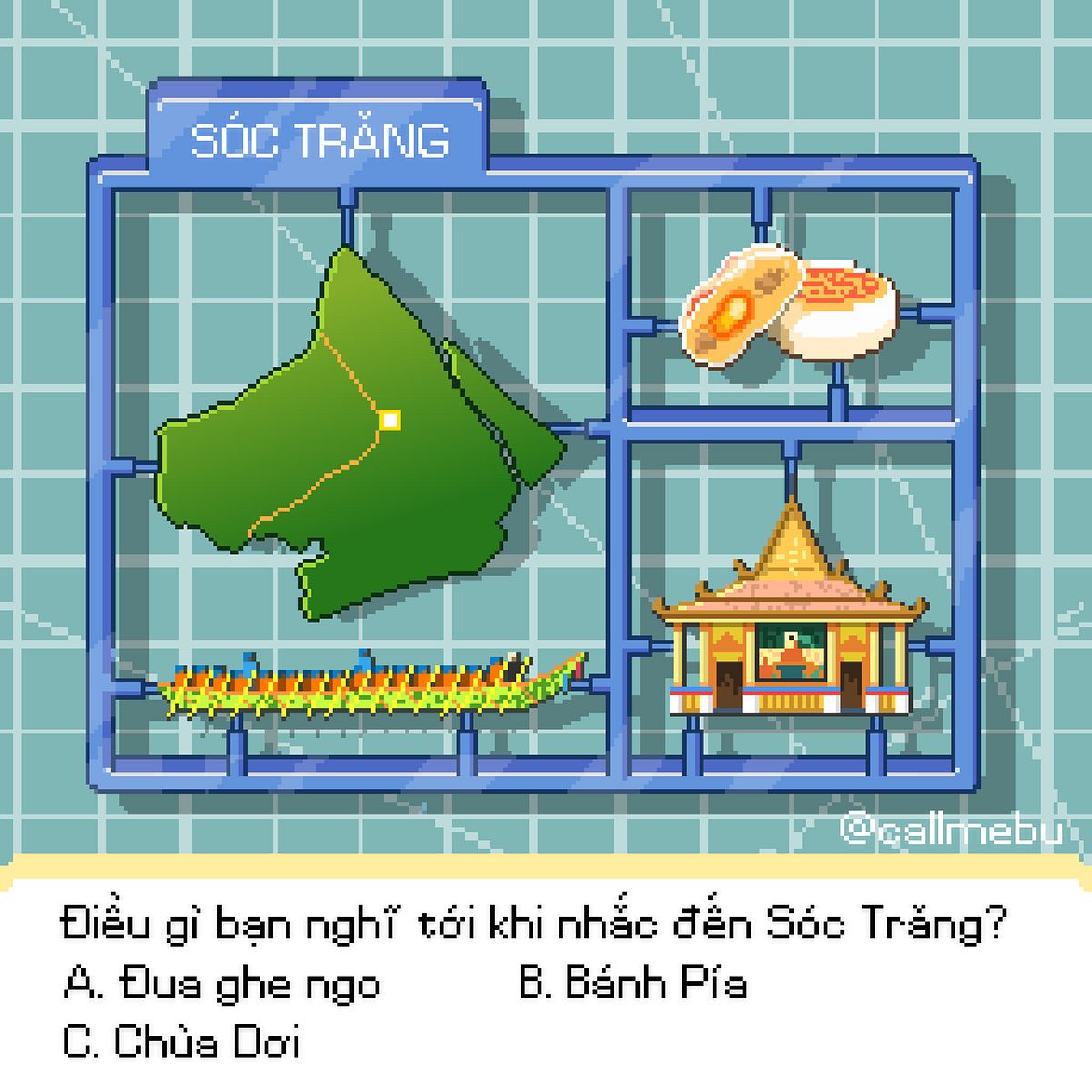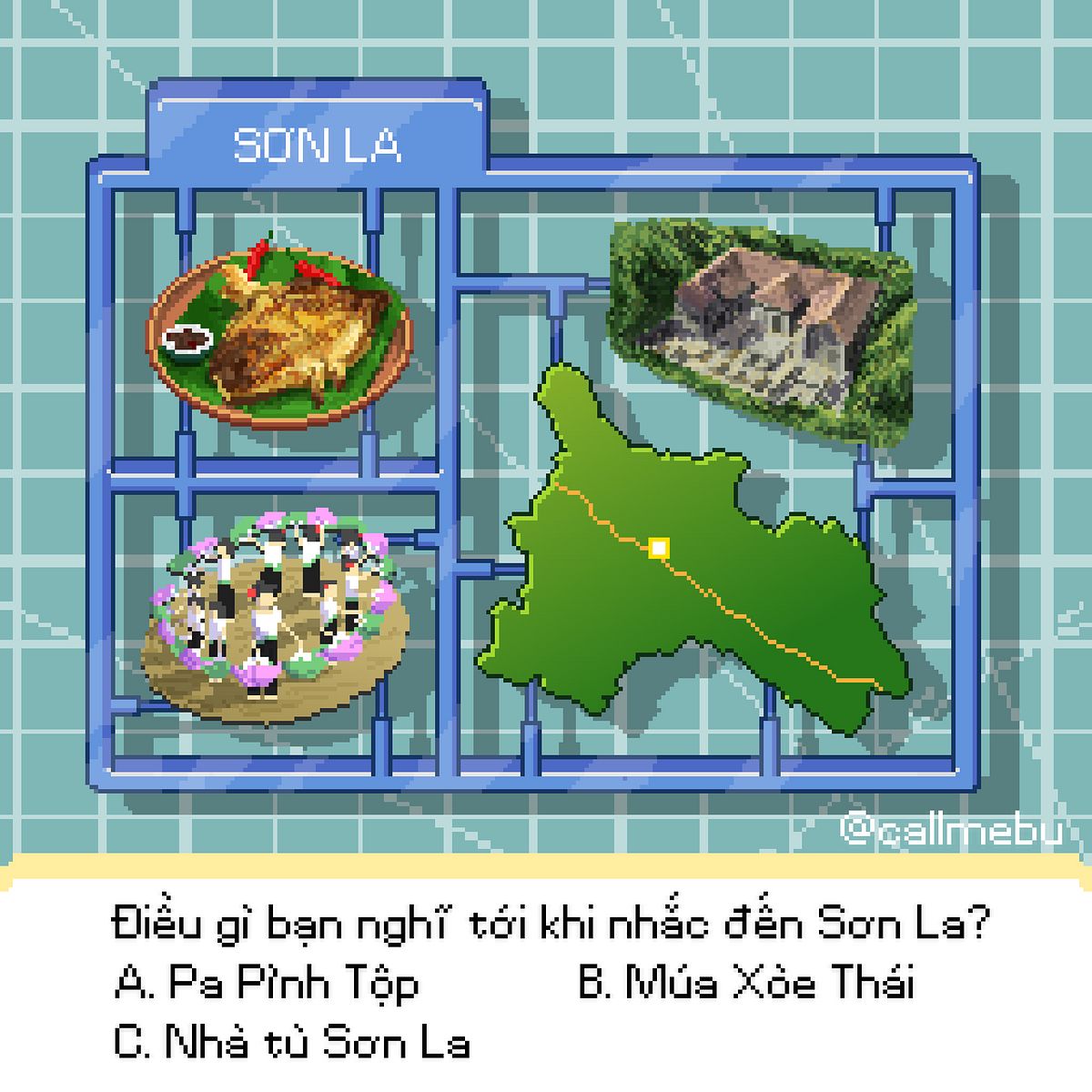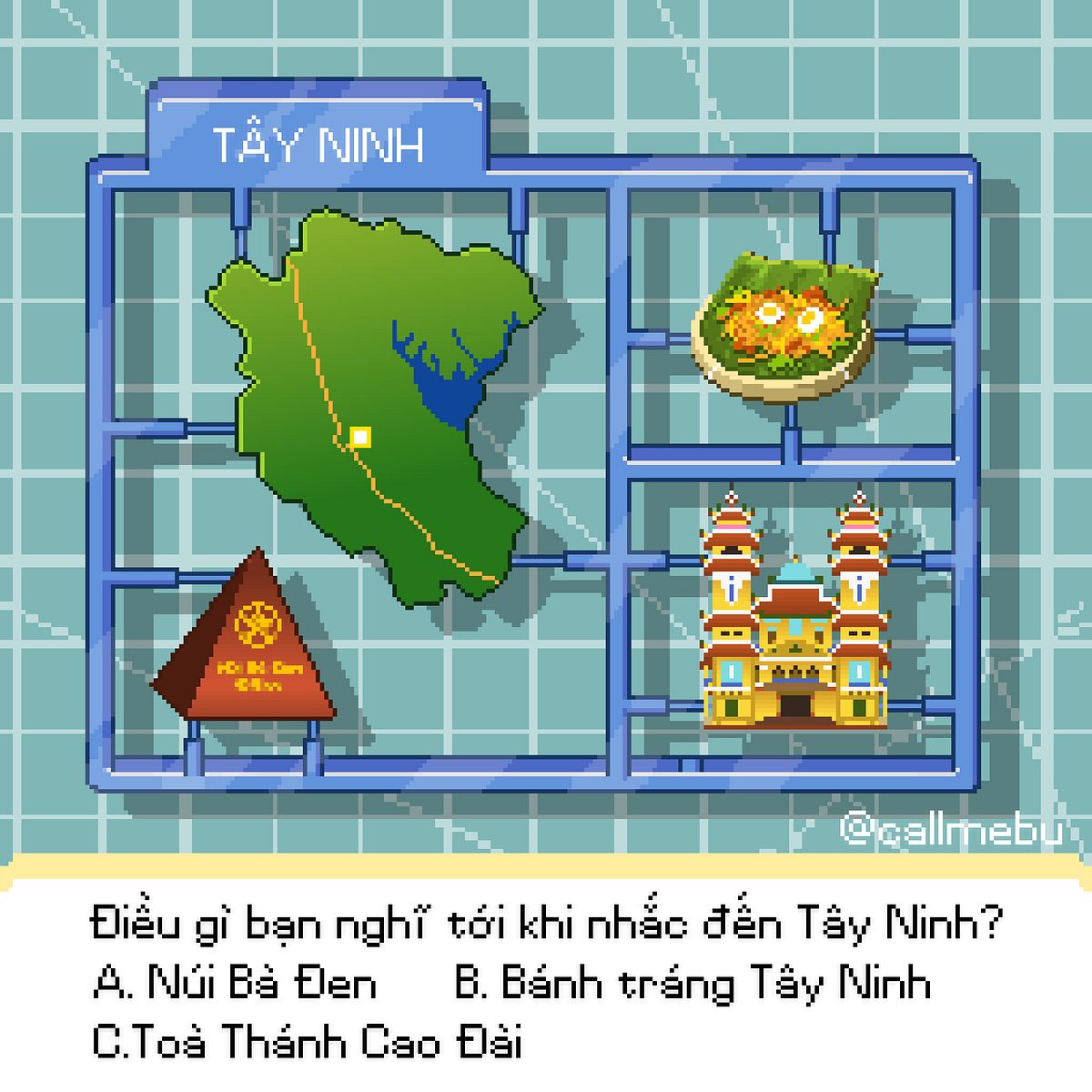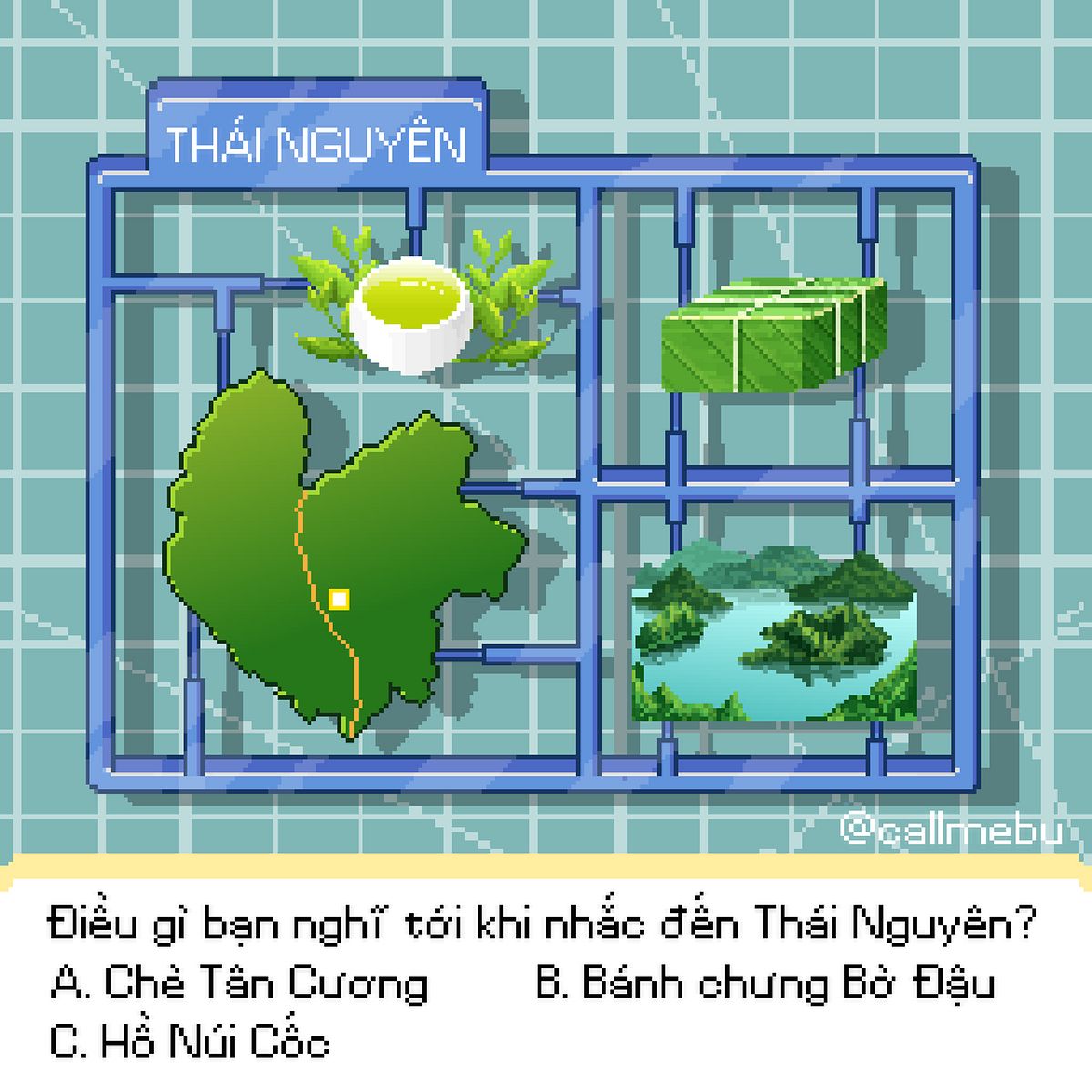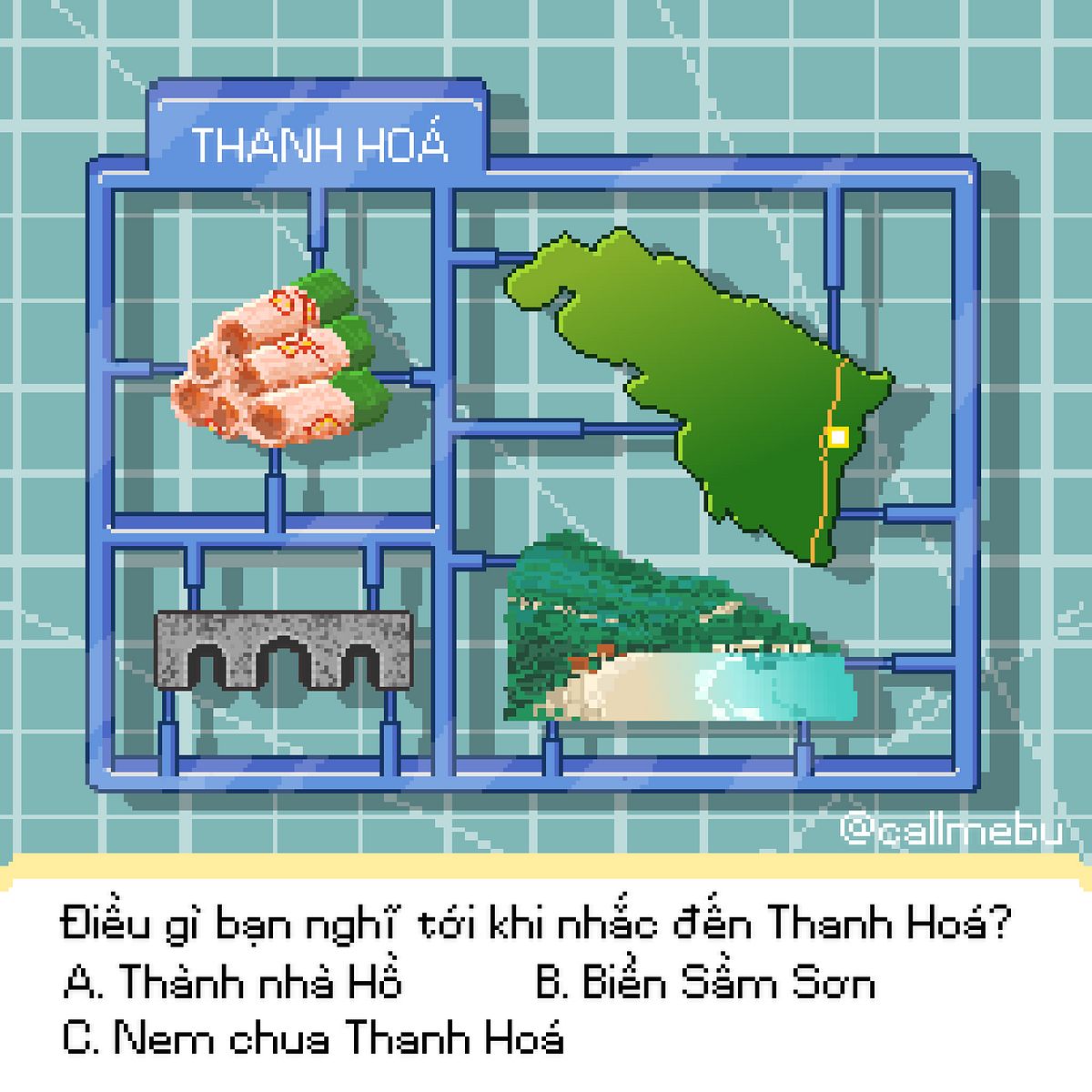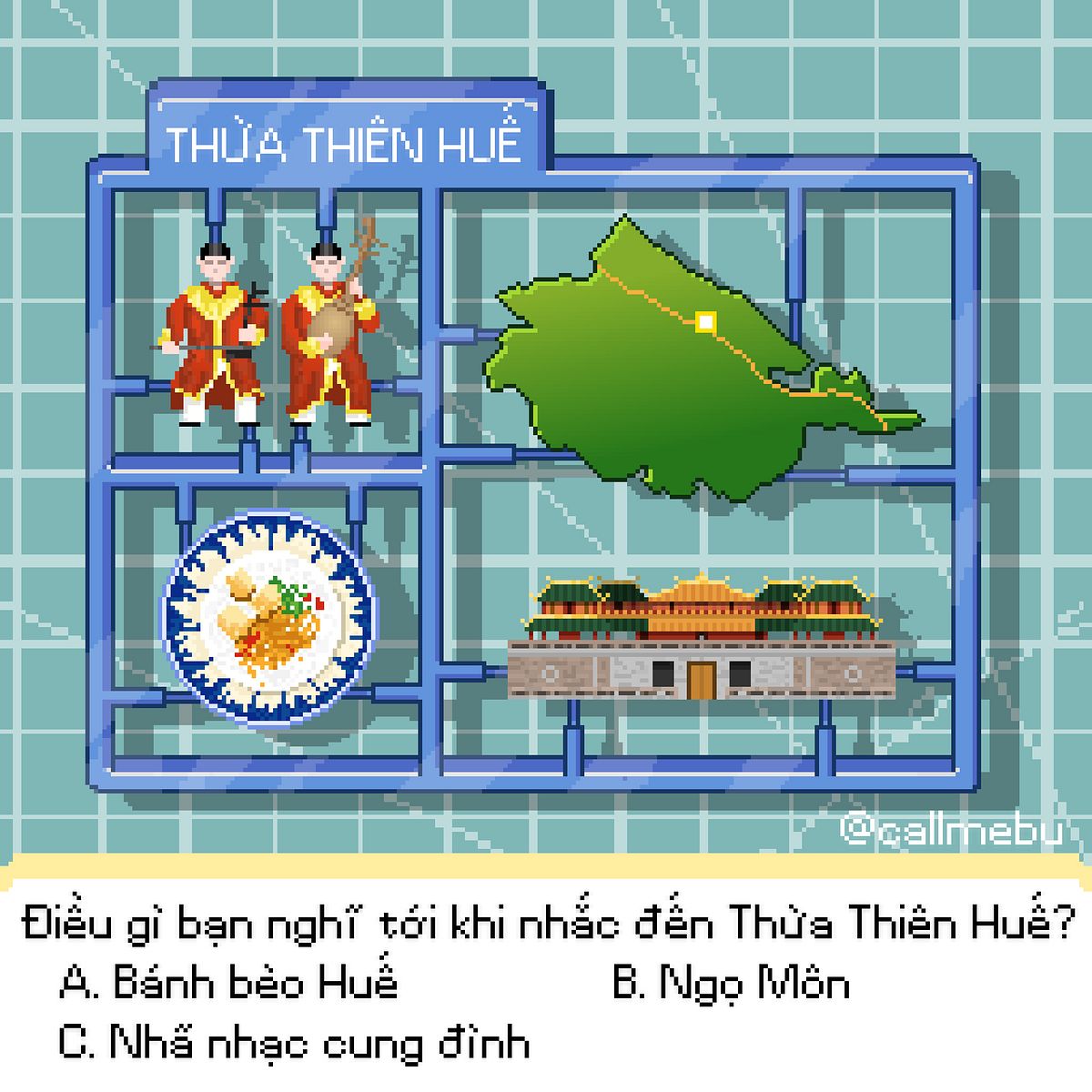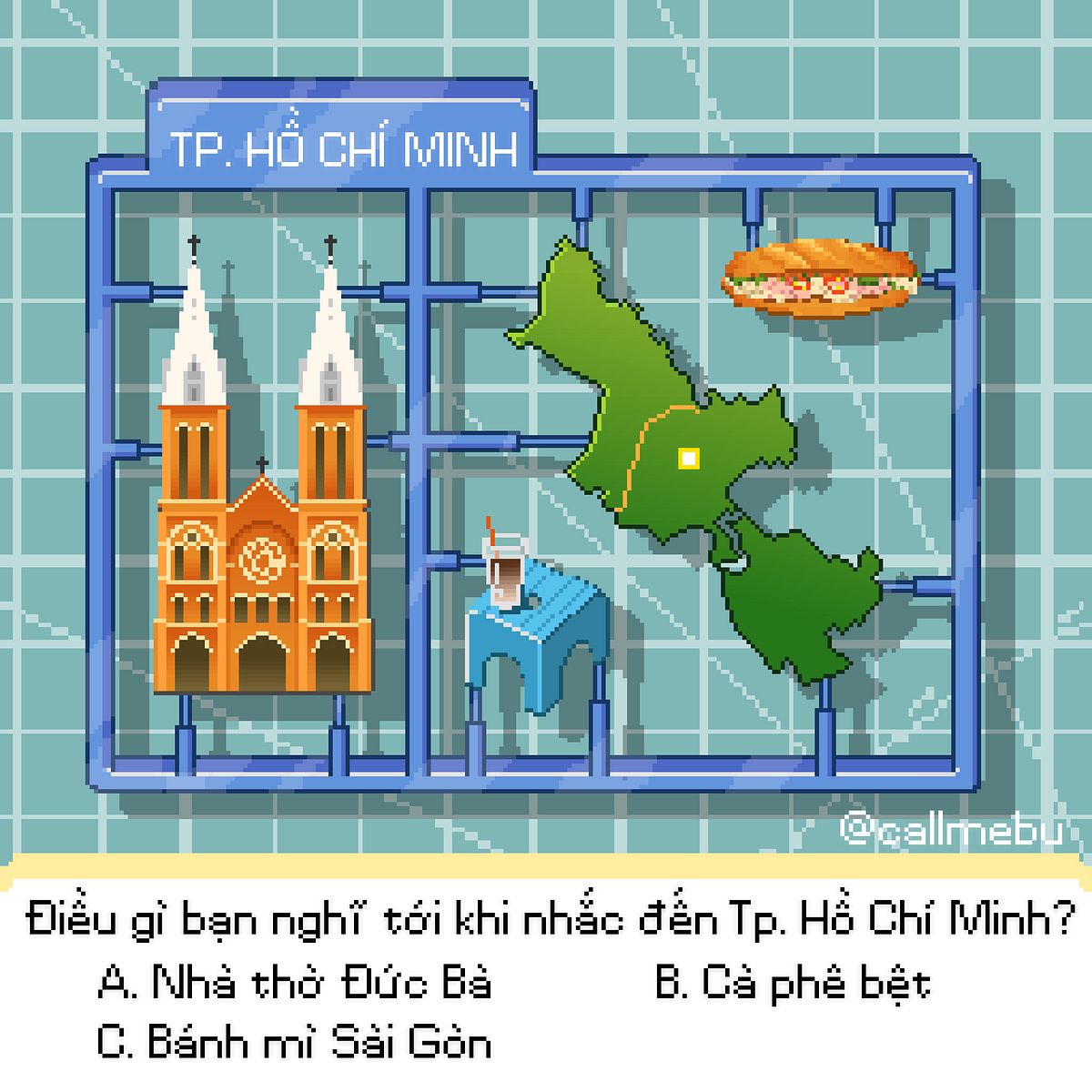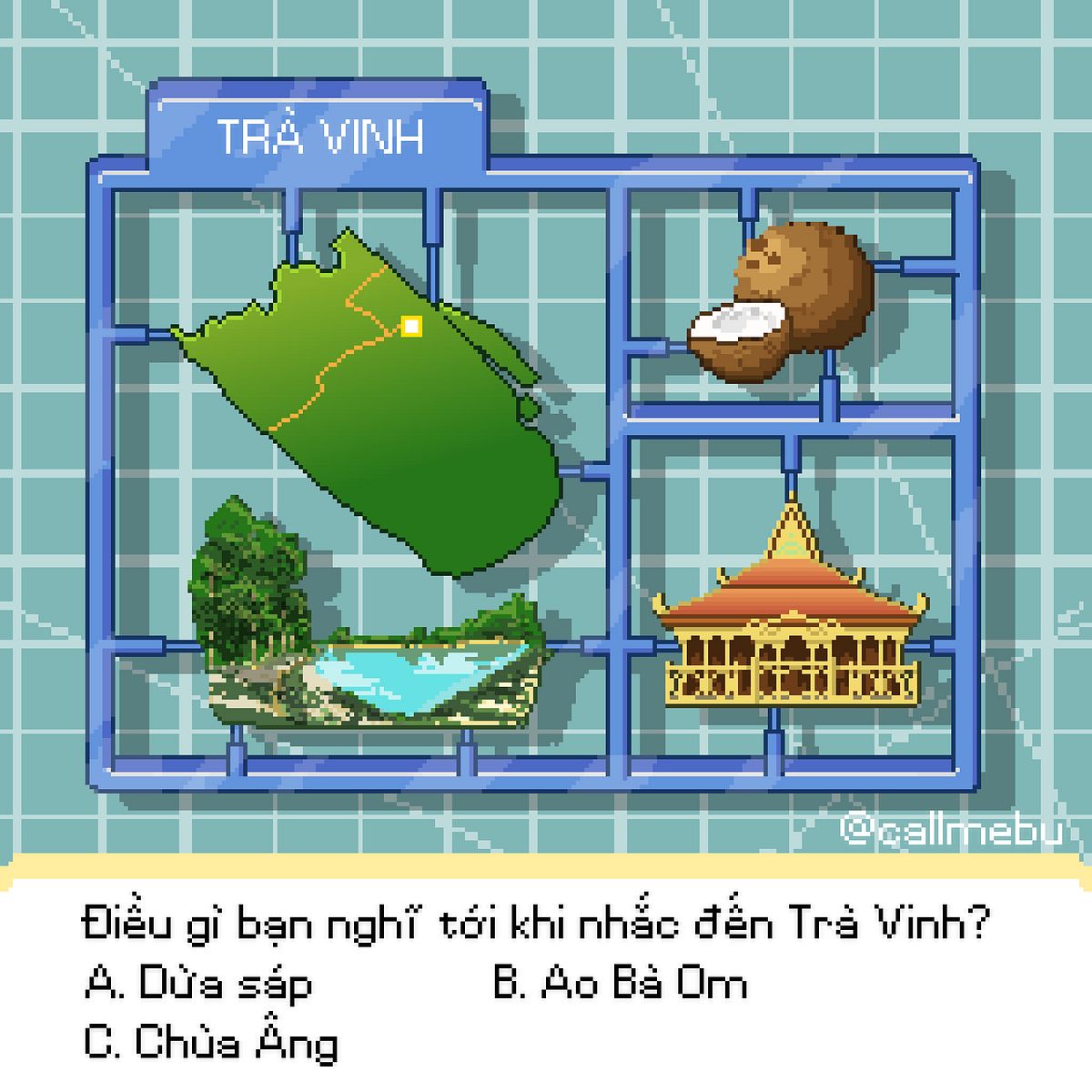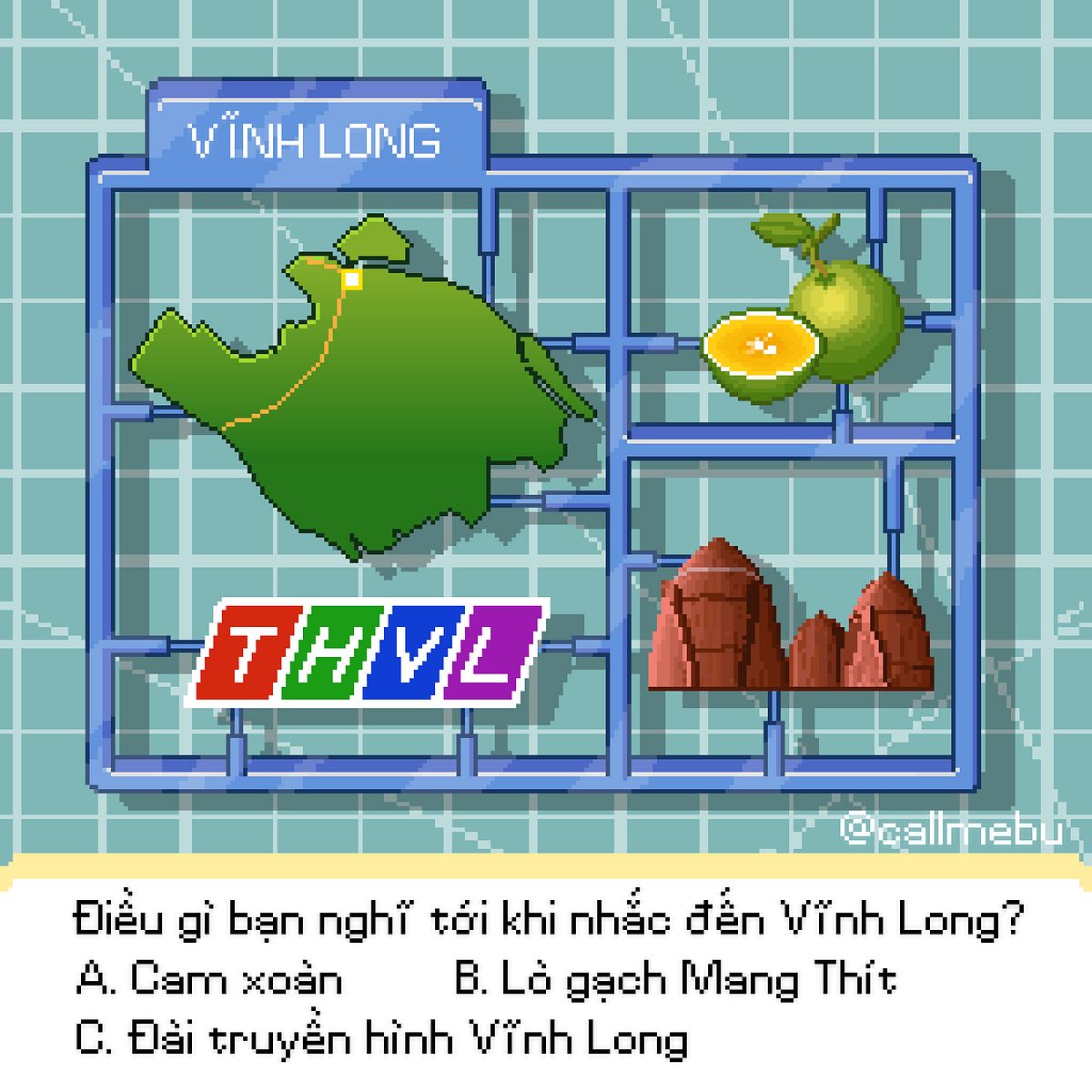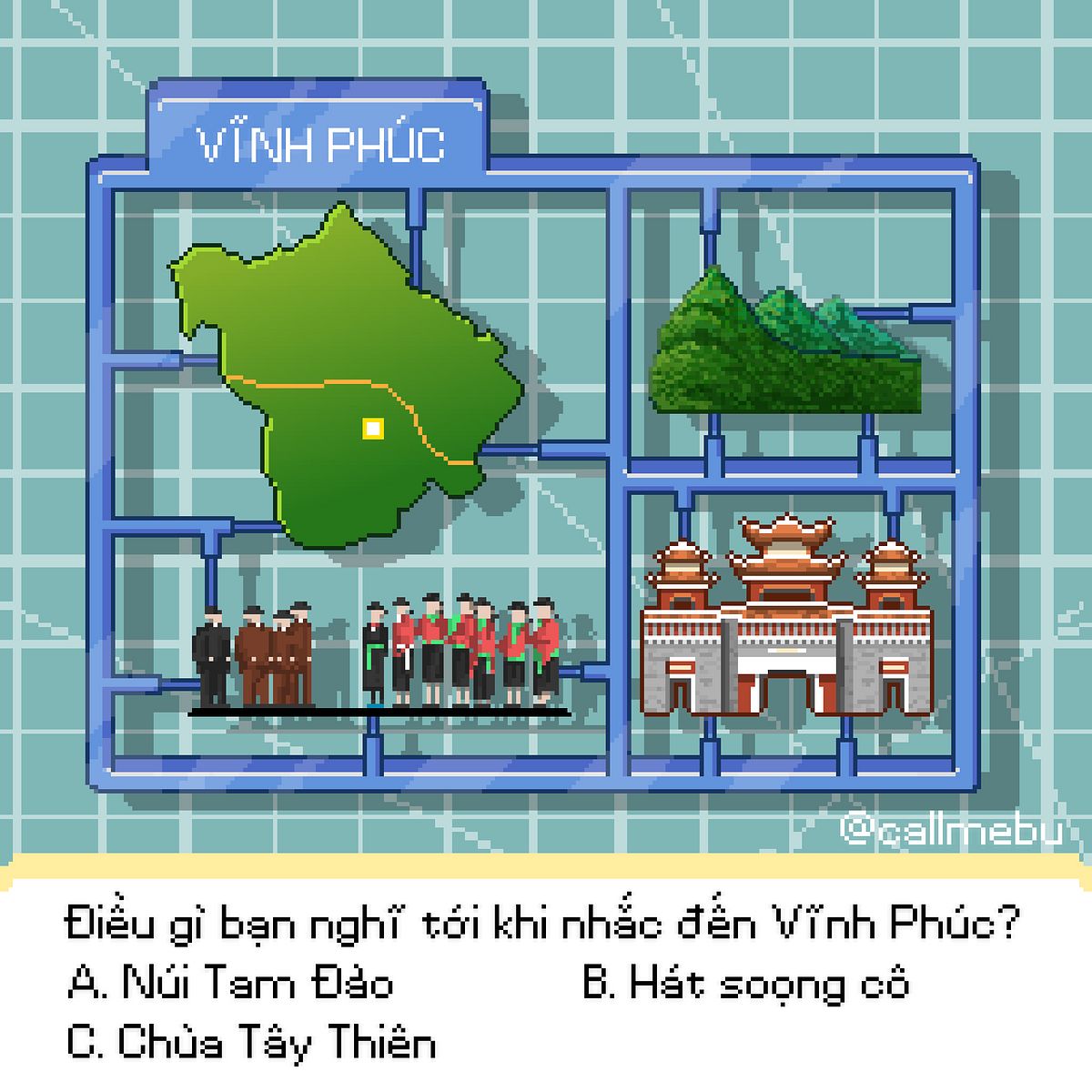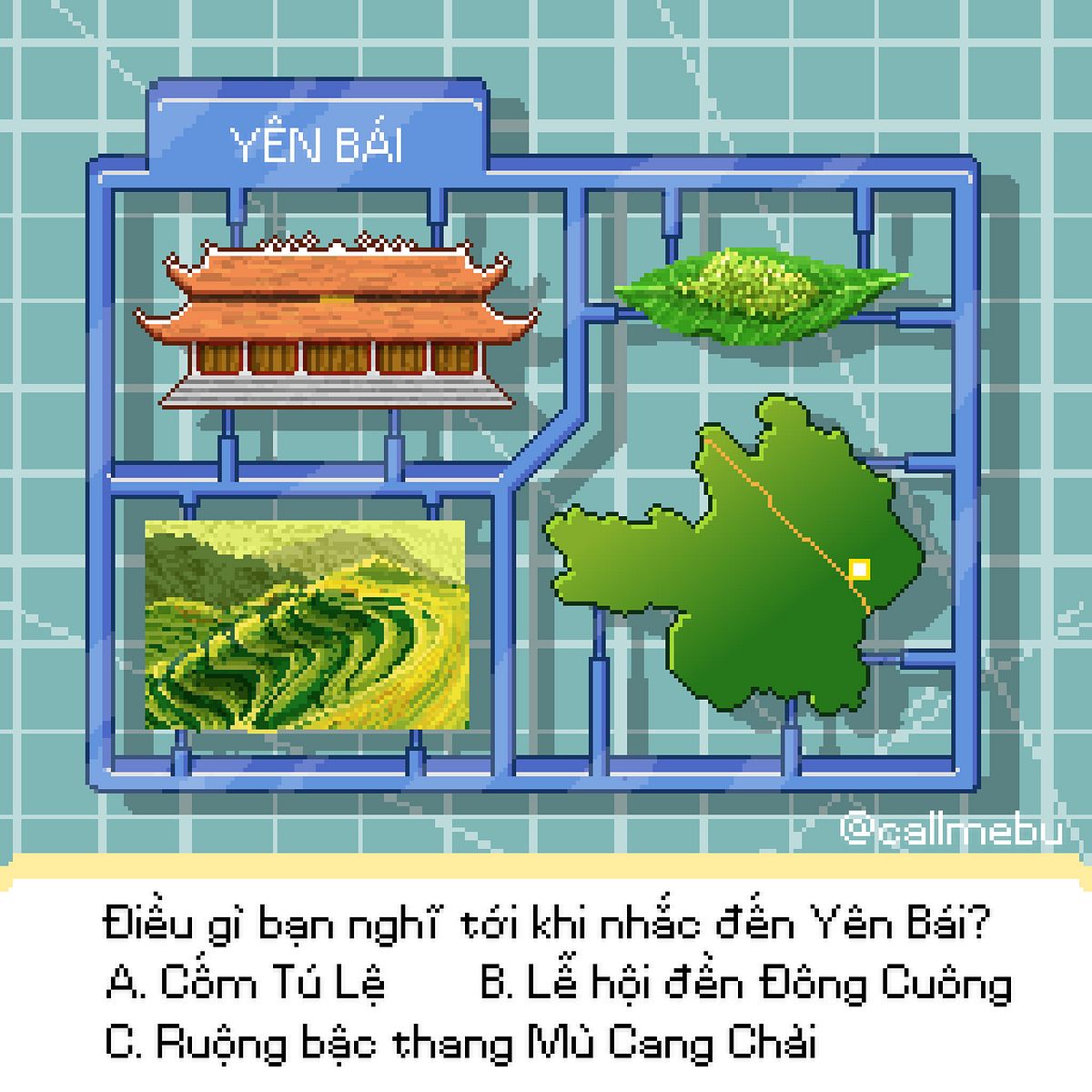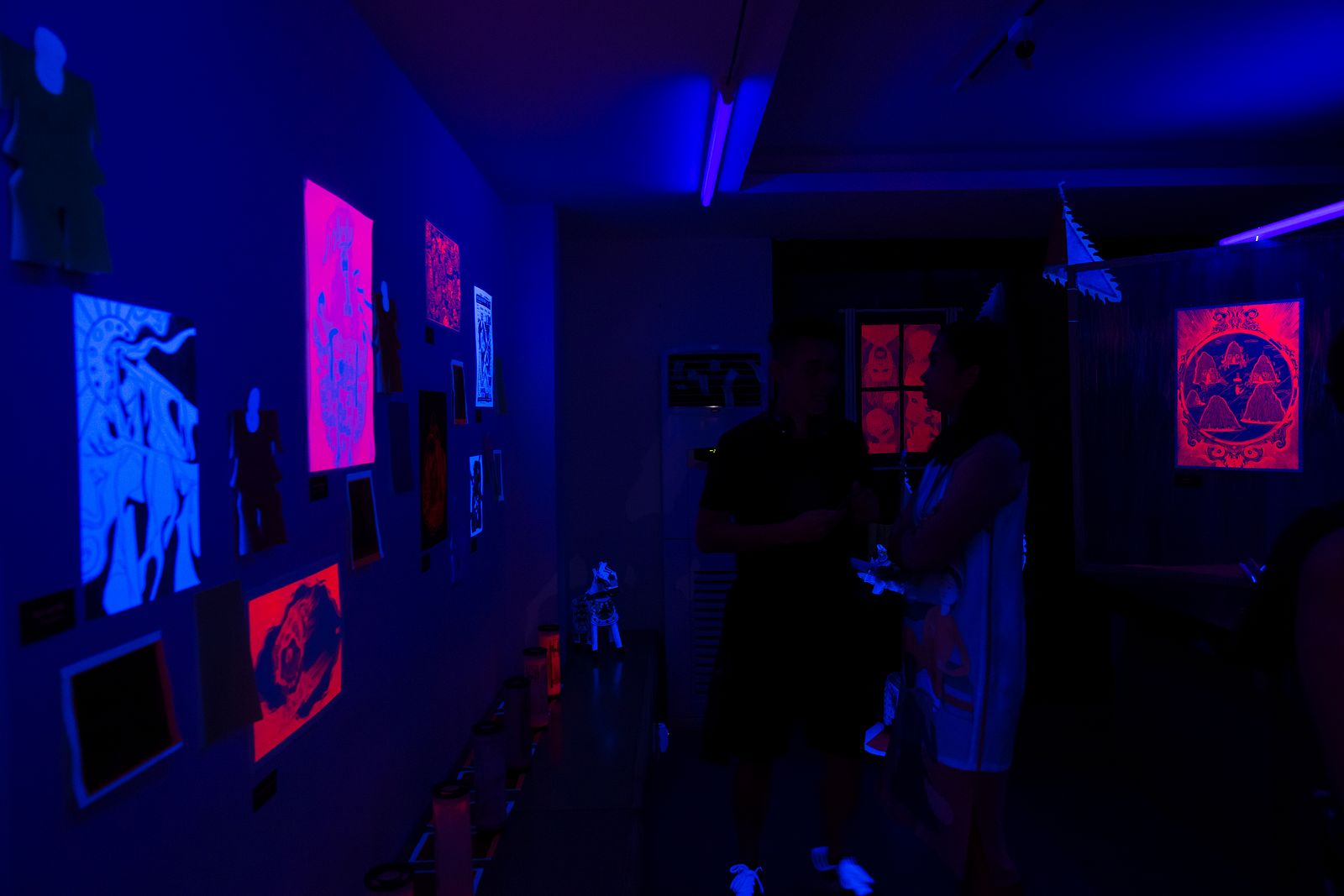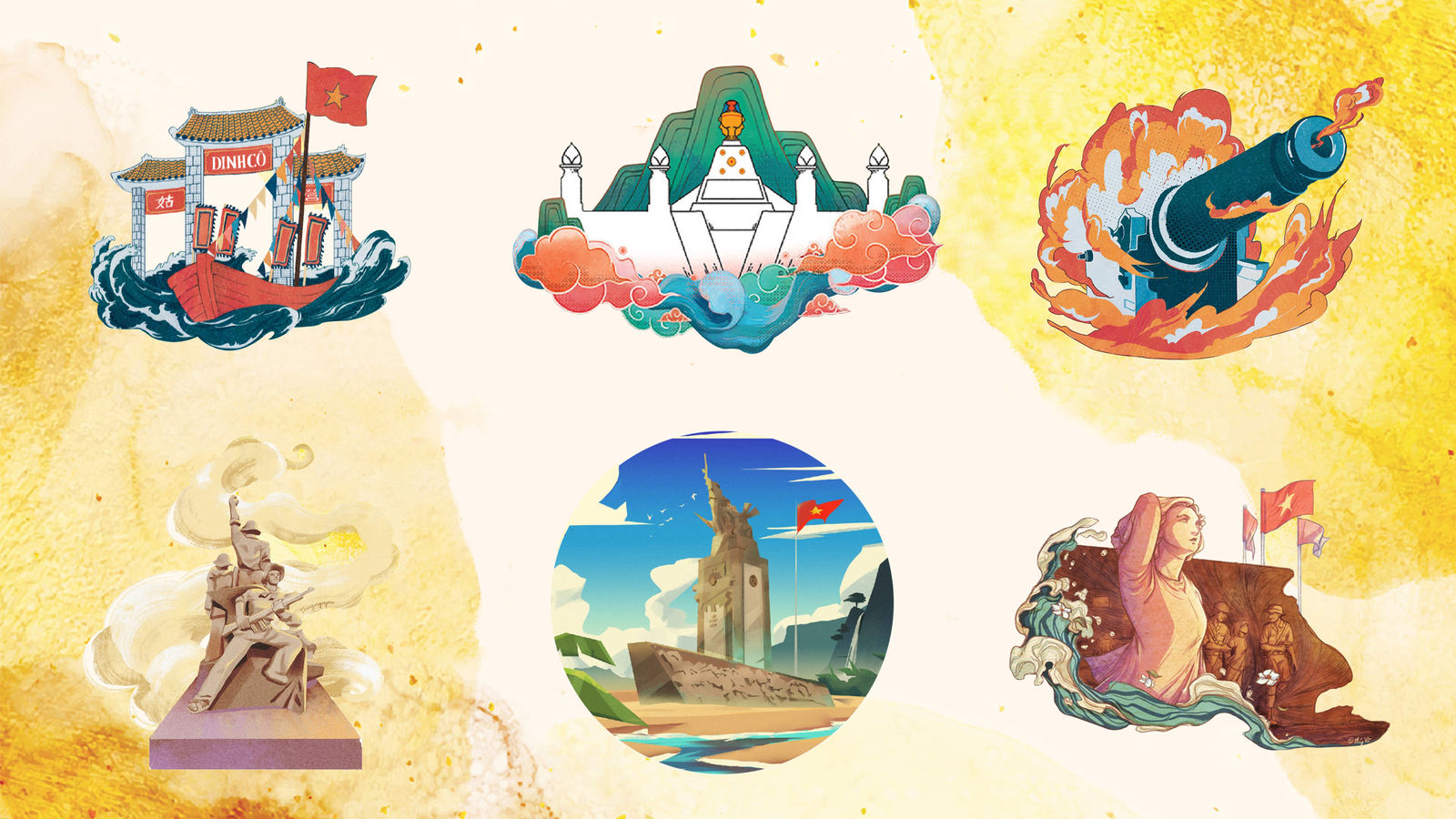How many of us can identify all 63 localities in the current administrative map of Vietnam? Who has been to all of them? Who can name all the 54 ethnicities of Vietnamese across the country? These are all surprisingly hard things to do considering the average citizen doesn’t travel to other provinces often, and if they do, few actually stray from popular tourist destinations.
“Đây Ngồi Ráp Việt,” a new art project by local artist Callmebu, might be a small but whimsical starting point to get Vietnamese to learn more about the culture, history, and culinary wealth of all corners of the nation. Each of the 63 provinces and cities is portrayed in pixel art as a model kit featuring its geographical boundary and a few standout landmarks, cultural entities, and local delicacies for which it is best known.
Hồ Chí Minh City, for example, is depicted with bánh mì and cà phê bệt and the Notre-Dame Cathedral, while the Hanoi kit comes with phở, the Old Quarter, and Hoàn Kiếm Lake. The hometown of the author, whose real name is Hồng Hải Đăng, is Bến Tre in the Mekong Delta, so it’s a no-brainer that he has to highlight the coconut tree and its most iconic confectionery kẹo dừa as representatives. “When my friends hear that I’m from Bến Tre, their first reaction would be ‘Are you visiting home? Please bring back some coconut candies!’ That should show how much the coconut is linked with Bến Tre,” he told Saigoneer.
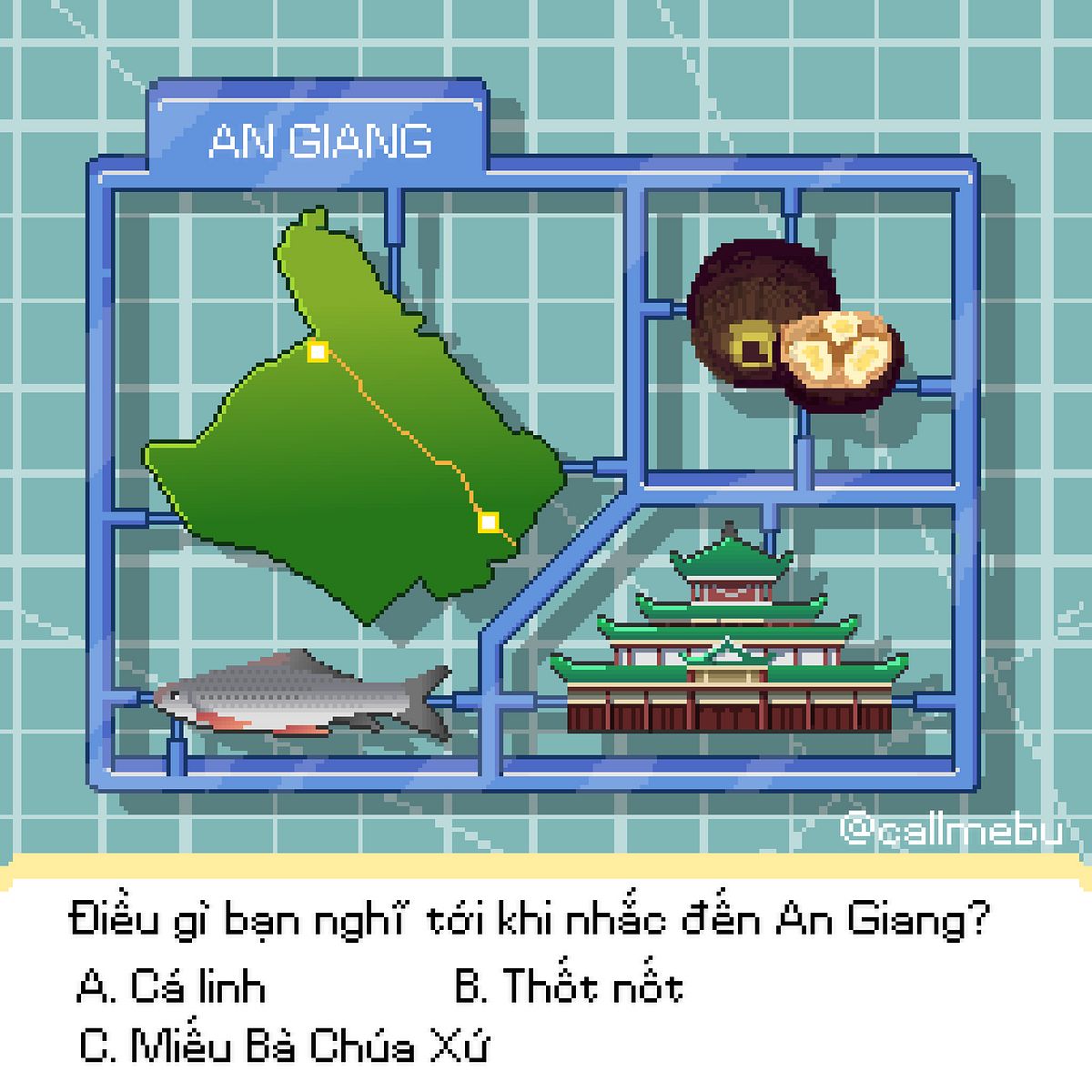
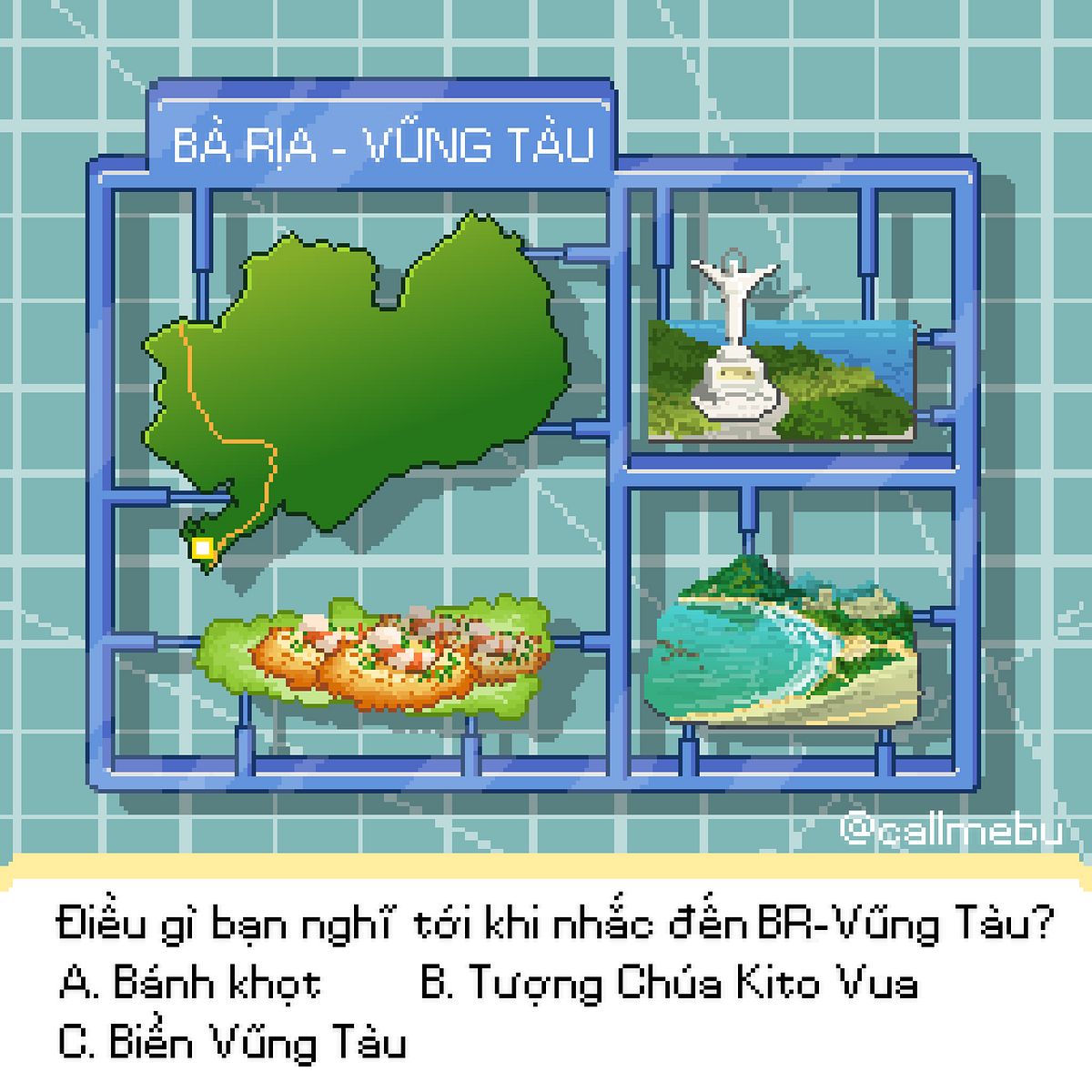
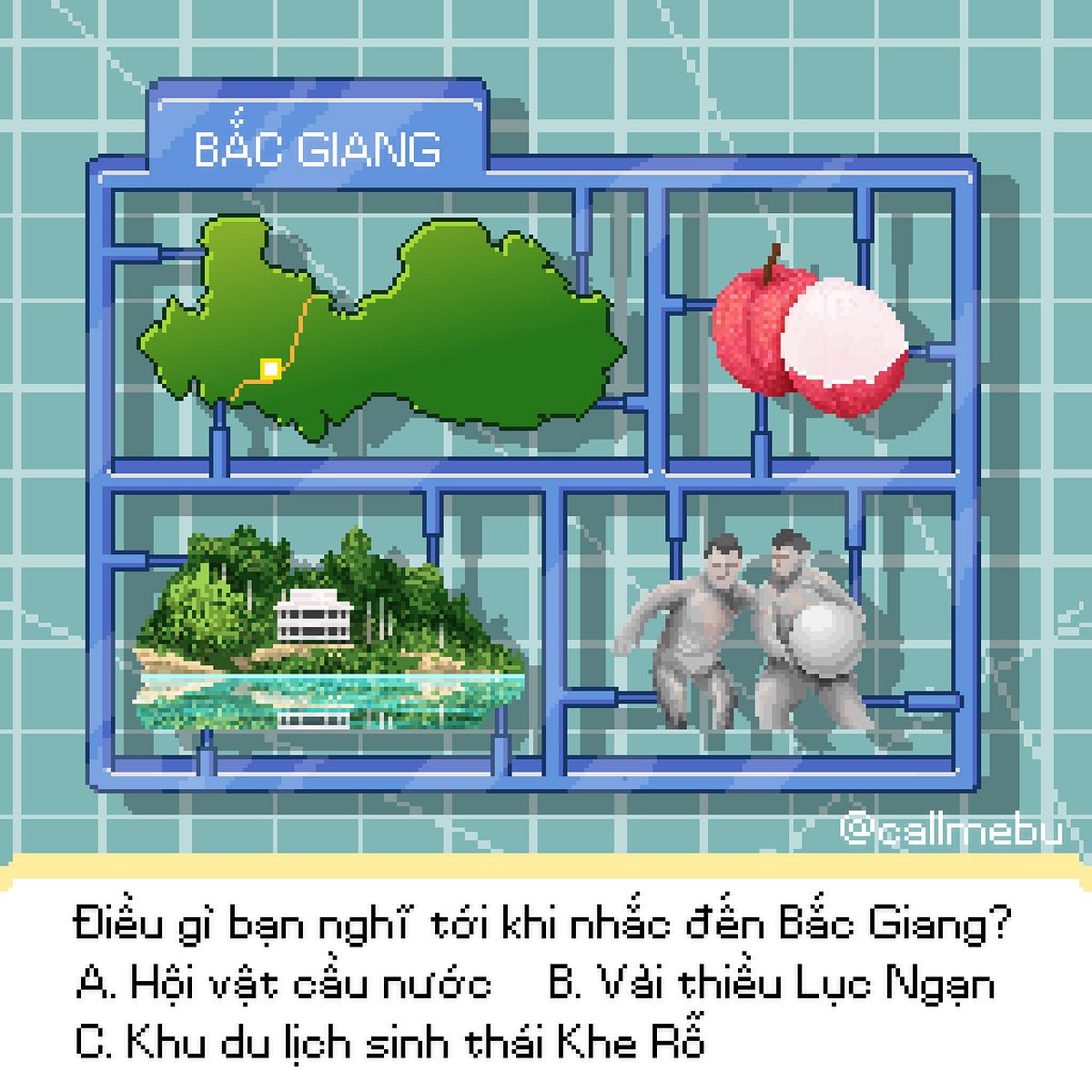
There is a certain vintage nostalgia to the pixelated figures that Đăng created to illustrate the regional treats and cultural activities, from Huế’s nhã nhạc performance to Hưng Yên’s Đông Tảo chicken. They evoke the charming games on older consoles like SNES, or modern pixel art titles like Terraria or Stardew Valley. “I picked pixel art because in my eyes, each province and city is like a ‘pixel’ in the bigger artwork of Vietnam,” Đăng shared. “The idea to turn them into model kits simply comes from my personal interest in Gundam figurines and jigsaw sets.”
Đăng’s passion for drawing manifested very early on during his childhood, and right when he was in secondary school, he already knew that he would pursue a career path related to art or creativity. Despite graduating university with a degree in architecture, he decided to work on illustrations and the arts. “Đây Ngồi Ráp Việt” was entirely completed during his free time in the evening after getting off from work, so it took about three months to take shape — from finalizing ideas, researching, drawing the demos to arriving at the finished versions. On average, each locality takes one day to be done.
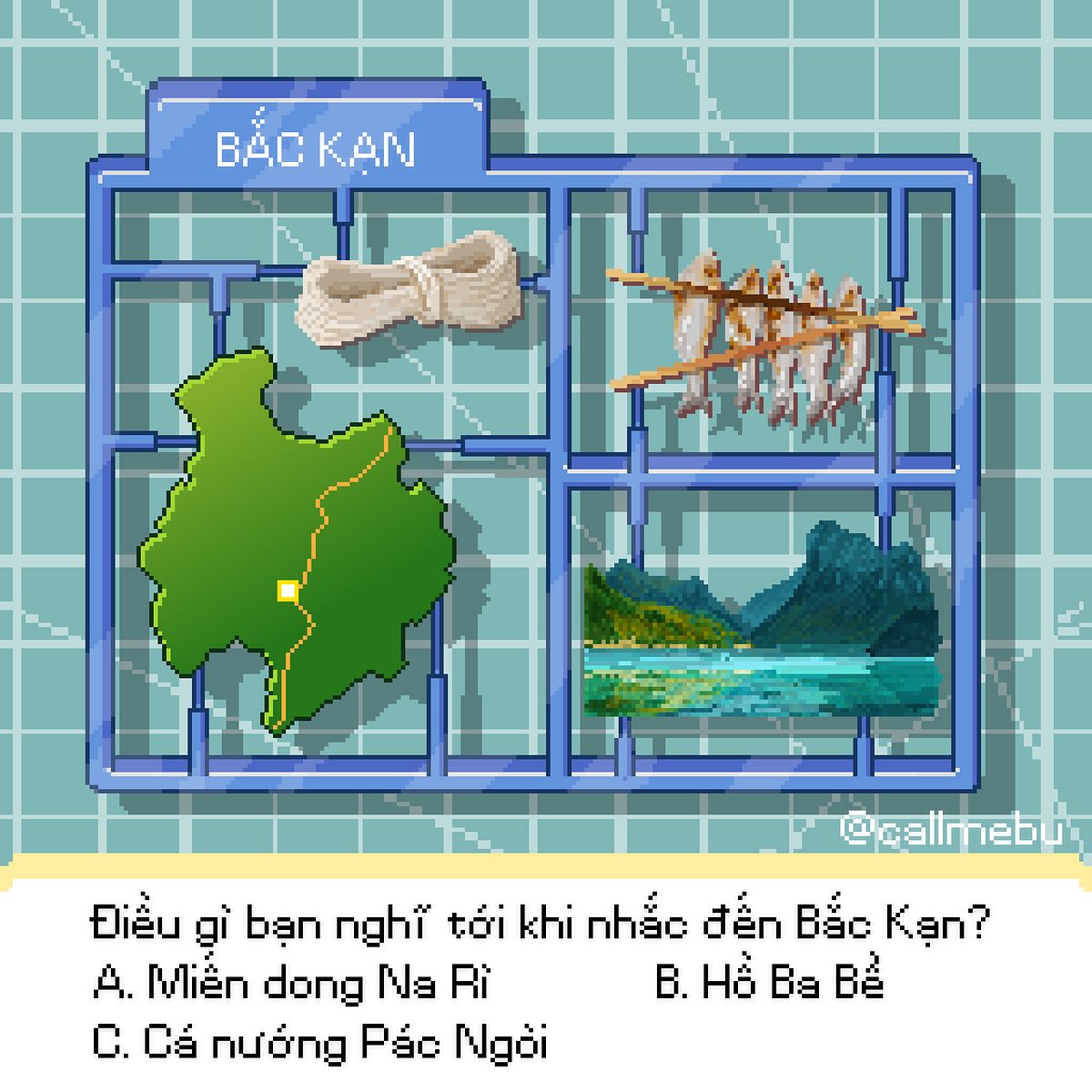

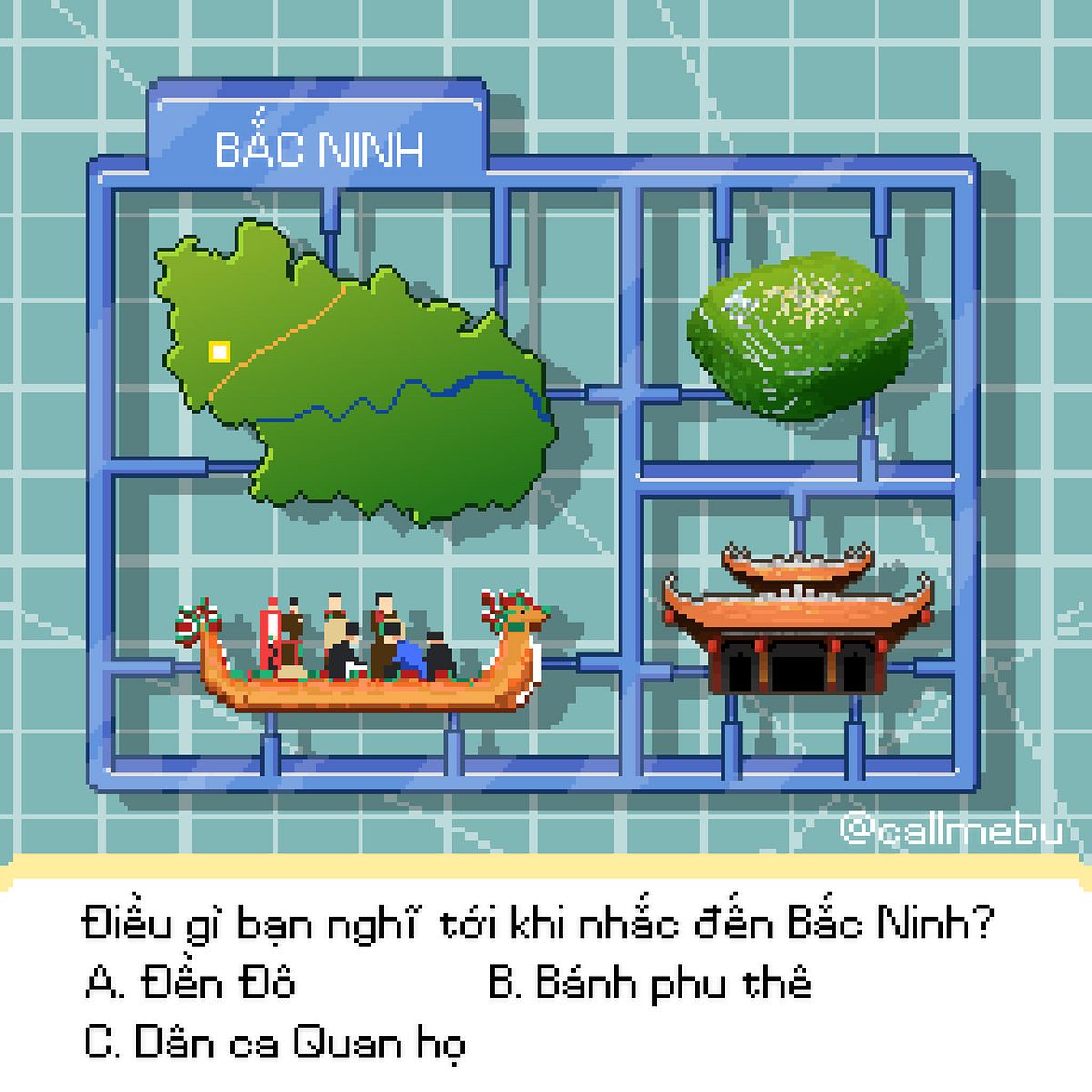
The research is an aspect of “Đây Ngồi Ráp Việt” that makes the project both challenging and intellectually intriguing to Đăng. For one, within the set boundaries of the model kit design, only three cultural representatives are featured for each province, so how does one go about choosing from the diverse range of unique snacks and iconic landscapes? According to the author, the selection criteria can involve a number of pillars like food, nature, architecture, history, and spirituality, but at times it’s simpler: just what impresses him the most about the places.
Which leads to the many examples that made this process of constant learning exciting, such as finally putting the name on the face of a dish that he’s enjoyed numerous times before or discovering that two seemingly isolated snacks from two separate provinces are actually more similar than previously thought, like Cao Bằng’s bánh khảo and Huế’s bánh in. Which province to attribute phở to was also a difficult decision, as there are theories and sources pointing the soup’s origin to both Hanoi and Nam Định.
Ultimately, delving deeper into the regional cultures of Vietnam was the one guiding purpose of “Đây Ngồi Ráp Việt,” for both its creator and netizens who enjoy tiny cultural discoveries. “When I eventually completed the artworks, I felt quite emotional, as if I’d finally assembled Vietnam in my own way,” he admitted. “It started at first as a personal project, but once I shared it online and saw how people recognize their hometown in each pixel, it made me happy.”

